Anthony Metivier's Blog, page 16
May 5, 2021
What Is Autobiographical Memory: A Simple Guide
 The term “autobiographical memory” sounds straightforward enough, doesn’t it?
The term “autobiographical memory” sounds straightforward enough, doesn’t it?
In reality, this aspect of human memory is pretty complex.
And the way scientists write about it can be hard to penetrate.
So let’s take a step back and get a working definition of autobiographical memory and some examples that are easy to understand.
Once you understand the different levels of autobiographical memory, you’ll be able to understand yourself and others better.
And those psychology exams? Consider them aced when this term comes up.
Let’s get started.
What Is Autobiographical Memory?In a word, this type of memory is a “system.”
Even cooler, it’s a system that draws upon other systems.
You see, memories are spread all over the brain. Or as memory expert Dr. Gary Small describes it, memories are distributed into what you can think of as “neighborhoods.”
This means that when your brain serves up autobiographical memories about your life, it might be drawing upon:
Episodic memorySemantic memoryIconic memorySensory MemoryIf you think about these different aspects of memory as cousins and uncles who live in different neighborhoods throughout your brain, then experiencing an autobiographical memory is like an event.
In other words, if you’re trying to remember something about yourself, you will gather all those different kinds of memories into one “room,” the same way you gather your family members for Thanksgiving dinner.

And because autobiographical memory is something you can deliberately call upon and experience consciously, it belongs to a larger level called explicit memory. This is different than implicit memory, which involves unconscious processes.
Do Some People Have Superior Autobiographical Memory?Yes, and the scientific term for superior autobiographical memory is hyperthymesia.
This form of memory is sometimes confused with eidetic memory, which is itself mistakenly associated with photographic memory.
Superior autobiographical memory or hyperthymesia isn’t understood well by scientists. In fact, some scientists think that there might be OCD or obsessive levels of self-reflective repetition involved. If this finding proves correct, then it would be elaborative encoding that explains the high levels of recall these people experience.
Jill Price is one such notable case where people have noticed that obsessive levels of journaling have featured across her life. But whether or not repetitive journaling explains this level of recall or not, here’s the easiest way to think about it:

Researchers have noticed that some people with superior autobiographical memory tend to journal much more than the average person.
People with hyperthymesia are simply more efficient at calling all those different types of memory into the same “room” to help produce the experience of personal memories.
In fast, it is very telling that superior autobiographical memory is really the only kind of memory that has shown this feature. As the personal suffering seen in the Price case shows, there might be such a thing as too much reflective thinking.
The 3 Levels of Autobiographical MemoryThere are three levels and four “types” of autobiographical memory. It’s useful to distinguish them because they involve different kinds of autobiographical information.
Type One: Lifetime PeriodsThis literally means the memories you have to distinguish childhood from your adolescence, early adulthood, middle age and senior year. Jean Piaget described these periods in great detail in his theory of cognitive development.
Some scientists include other categories in this type of autobiographical memory. For example, they would include how your memory divides:
Elementary schoolHigh schoolCollegeType Two: General EventsGeneral events are much less fluid and don’t have distinct borders like “grade seven,” which has a beginning, middle and end.

A time-based event like the fact that you attended grade seven at school is a general autobiographical memory.
This level of autobiographical memory refers to those kinds of memories when you basically remember a set of days, weeks or perhaps entire seasons gathered around a theme.
For example, when you tell someone a story about a fascination you had, you might say, “I studied that topic for a good couple of weeks. I couldn’t get enough.”
But whereas lifetime periods have more specific beginnings and endings, you would not be able to say when exactly those weeks of a general event took place.
Type Three: Event SpecificWhen experiencing this level of autobiographical memory, you can literally remember things that happened down to the second. This might be a memory of the first time you saw the person you married, or a flashbulb memory of a tragic event.
The 4 Types of Autobiographical MemoryThere’s some crossover between “types” and “levels” of memory, but it’s still useful to separate the two so you have the fullest possible picture.
Level One: Personal InformationExamples of autobiographical memory here include:
Your name and the names of your parentsWhere you were bornWhere you went to school
Remembering where you went to school is an example of autobiographical memory.
To help you dig up more of this kind of memory you might not have experienced for a while, here are 3 Memory Games You Can Play With Your Childhood.
Level Two: Copies and ReconstructionsRemember when I talked about superior autobiographical memory being poorly understood?
One reason why is that just because the person thinks they remember their lives exceptionally well, doesn’t mean that they really do. Studies have shown that we all reconstruct our memories, and autobiographical memories are often highly inaccurate.
Why?
Think back to Dr. Gary Small’s neighborhood analogy.
Each time a memory is recalled, it changes location in the brain. Anything that moves is transformed, so by the time you’ve recalled the memory, it is now:
Located somewhere else in the brainChemically different than it used to beThis doesn’t mean that we’re all liars. But it’s just a fact that memories change over time and by recalling them, we are literally “reconstructing” them.
To make things more complicated, copies can be incredibly vivid and deliberately amplifying them can increase their accuracy. The act of vivifying your memories so you can recall them with greater accuracy is greatly assisted by using a Memory Palace. Learn more here:
Level Three: Generic Vs. SpecificThis level is basically the same as the second and third type described above.
The difference here comes down to the conscious effort to “relive” the memories.
For example, we can often call up generic memories about our lives without thinking too much about them. “Oh yeah, I remember doing that,” is easy to say about the time you went for ice cream on a date. But you don’t actually have to relive it because going for ice cream is a generic event.
However, if someone asks you to remember a specific time you went for ice cream when something special happened, you might have to press them for more specific details. For example, they might need to give you the street name or general neighborhood to help you remember the exact ice cream excursion they have in mind.
Sometimes researchers think of this level differently in terms of the remembering vs. knowing dynamic, but the topic is far from decided upon.
Level Four: PerspectiveThis level of autobiographical memory is especially interesting.
For example, you can remember going for ice cream from your first person point of view. This is called the “field” perspective.

But you can also think of the same event from either a second or third person perspective. For example, you can imagine looking down at yourself having ice cream from the sky. Or you can see yourself through the eyes of the person you were with. This is called the “observer” perspective.
Autobiographical Memory ExamplesMemory expert David Berglas gave the ultimate autobiographical memory example in his book, A Question of Memory.
He calls it “The Kennedy Effect.” During his era, people used to ask each other all the time: “Where were you when John F. Kennedy died?”
These days, people ask “Where were you when 9/11 happened?” much more often, but the principle is the same.
If you observe people when asking this question, you will see how most people will frame their explanation from the field level of autobiographical memory. If you want a fun exercise, pick a major historical event like this and try to see yourself while it is happening through the eyes of others.

As you think about doing that, here are some other autobiographical memory examples:
Your wedding dayGetting your driver’s licenseTaking a trip to a foreign countryHaving a childGraduating high schoolReceiving an awardRetirement dayOf course, autobiographical memories aren’t always positive. Here are some negative autobiographical memory examples some of us might experience:
A traffic accidentCourt datesLosing a loved oneA home invasionWarThe good news is that studies have shown that people tend to recover from such events quite readily.
Best Books To Read On Autobiographical MemoryI find this branch of memory so fascinating, that I thought you might like to know some of the books I’ve read on the topic over the years.
First up is The Organization and Structure of Autobiographical Memory by John Mace. This book brings together over 30 years of empirical findings from multiple researchers. Its strongest point is how it shows the cultural influence on how autobiographical memories form. For example, some cultures remember more about their personal lives than others based on their political leanings.

Autobiographical Memory Development: Theoretical and Methodological Approaches is a recent volume edited by Sami Gülgöz and Basak Sahin-Acar. The strength of this book is how it has incorporated the relatively new field of trauma studies into the conversation.
Everyday Memory, edited by Svein Magnussen and Tore Helstrup is a great book I want to mention specifically for one chapter. It’s the chapter called “Memory Sensitivity in Autobiographical Memory,” co-authored by Cesare Cornoldi, Rossana De Beni and Tore Helstrup.
In this chapter, the authors point out how rewarding engaging with the memories of your life can be. As they suggest, it can readily become a self-reinforcing practice that serves you many times over in life:
“Having experienced positive and rewarding effects of searching one’s past, one is more likely to engage in new attempts. Reminiscing develops into a cognitive style that can be backed up by knowledge about different pathways to one’s own episodic memories.”
Autobiographical Memory and Your Cognitive StylePersonally, my cognitive style used to be horrible. In fact, I used to find thinking about my past a horrifying experience.
But as I shared in this TEDx Talk, I found that thinking addressing the experience of memories in a slightly different way “defanged” them and made all memories much more positive in the ways that Cornoldi, De Beni and Helstrup suggest.
https://www.youtube.com/watch?v=kvtYj...
As you’ve already seen, this post is packed with resources to follow-up on.
And for more exercises that can improve how you access your personal history through memory, give these visualization exercises a try next. The fourth exercise in particular brings your personal memories together with the places you used to live.
Now that you know all about autobiographical memory, what do you say? Are you ready to explore the aspect of your memory more as a means of enhancing your experience of life?
April 28, 2021
How To Use Image Streaming To Improve Your Memory
 If you want to improve your ability to visualize, think clearly and remember more, proper image streaming is important.
If you want to improve your ability to visualize, think clearly and remember more, proper image streaming is important.
The best part is that you can learn to do it even if you do not have a strong “mind’s eye.”
So just imagine being able to experience more of your inner genius on demand.
You’ll enjoy reading much more (including complicated books).
Plus, your mind won’t feel so overwhelmed when you can instantly use mental imagery to focus on demand.
In this post, I’ll actually teach you two different kinds of image streaming: passive and active.
Let’s get started.
What Is Image Streaming?A lot of people attribute the streaming image concept to Win Wenger.
Sure, he wrote about it in a book called The Einstein Factor. Wenger defines the practice like this:
“Image-Streaming consists of describing aloud, in as much detail as possible, to a live listener or an audience, or to a tape recorder as potential audience — while observing the ongoing stream of sensory imagery of all kinds.”
Although there are some great things about Wenger’s book, it’s also packed with pseudoscience.
Perhaps more alarmingly, there’s a stunning lack of awareness about Einstein.
For one thing, Einstein is not known to have considered himself a genius. He probably had no time for such imprecise terms. If you’ve read The Unexpected Einstein, you’ll be aware of just how humble Einstein was about his discoveries.
As Walter Isaacson shows in Einstein: His Life and Universe, Einstein had every reason to be modest. He’d actually borrowed the imagery he “streamed” from Aaron Bernstein.
This was the influential author who “took his readers on an imaginary journey through space.” He also “asked readers to imagine being on a speeding train” as a bullet was shot through the window.
Was imagine streaming part of how Einstein formulated the equations involved in general relativity?
Absolutely not.
“Image streaming” is a term Wenger apparently invented. If anything, Einstein was mentally replaying images and concepts from Bernstein.
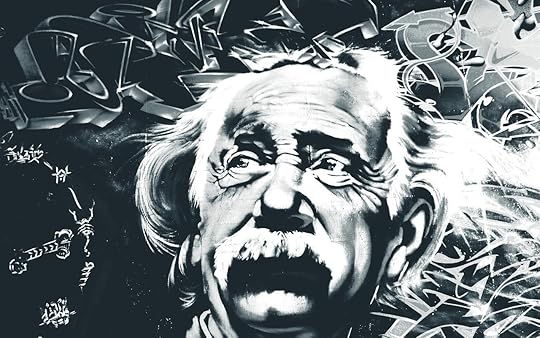
This does not diminish Einstein’s accomplishments. Rather, it places them in context and allow us to ask a better question:
Did Einstein use an image visualization technique to arrive at his conclusions? Absolutely.
And you can too. We just want to be a bit more historically accurate and scientific about the process so we can get started on the best possible footing.
The Deep History Of Image StreamingI don’t want to go back to the beginning of time, but we know that humans have been visualizing for a very long time.
And if you are visualizing for more than a few seconds, that experience is… “streaming” from one second to the next.
Who has streamed imagery perhaps more than any other group?
Ancient Indian yogis. Buddhist monks. Dominican priests and practitioners of hermeticism.
For each of these groups, the ability to sit and focus on mental imagery has been key to allowing ideas to arise and for expanding the mind.

For more details on how visualization was used in different periods of history, you can check out texts like:
Pratyabhijñā (see The Recognition Sutras , a translation with commentary by Christopher Wallis and specific exercises that involve image streaming from Shaivism)The use of Mandalas and visualization sutras in a number of Buddhist schools and some koans in various schools of ZenArs combinatoria in HermeticismAnd there is so much more.
Image Streaming And PseudoscienceNow, you might be thinking… didn’t you just accuse Win Wenger of pseudoscience? Aren’t all of these ancient traditions also linked with woo-woo?
Well, yes and no. For one thing, Wenger says image streaming will increase your IQ. This claim is highly dubious, and I doubt that any of the traditions listed above have ever claimed image streaming will help in this regard.
Second, we have tons of research demonstrating just how powerful practices like deity meditation are for enhancing the efficiency of your visuospatial processing. You’ll also want to check out the summaries of many scientific studies and brain scans in Andrew Newberg and Robert Waldman’s How Enlightenment Changes Your Brain.

Finally, the positive experiences I had with image streaming using the Memory Palace technique have been confirmed many times over.
See for example the exhaustive research conducted by Dr. Tim Dalgleish.
Dalgleish has shown how “streaming” positive memories can relieve clinical depression – which is exactly what happened to me years before I knew such studies existed.
How To Do Image StreamingAs Wenger describes it, image streaming involves observing and describing mental experiences.
I would rename this process “passive image streaming.”
All you have to do is:
Find a quiet place to practice, either seated or lying downUse a device to record your voiceTalk about what you’re experiencing in detail, perhaps while performing these visualization exercisesUse as many multi-sensory aspects of experience as possibleReview the recording for any additional ideas it might triggerI often use image streaming in real time when I can’t concentrate. For example, I will repeat in my own mind what people are saying and really make an effort to mentally experience their references.

In other words, if someone mentions a suspense novel, then I will think about a movie in the genre and an actor like Harrison Ford. The image streaming resulting from this simple practice has been tremendous for feeling more connected in conversations and remembering more about them.
What if you have aphantasia? You might want to try some of the processes I shared with AphantasiaMeow when we talked about using mind mapping as a potential aphantasia cure.
How To Do Active Image StreamingAt the end of the day, streaming imagery with a goal works a lot better.
And as I tell many people who ask me about this kind of visualization, the Memory Palace technique is one of the best ways to combine a goal with image streaming.
To get started:
Choose something you want to remember (like vocabulary, songs, numbers or )Use associations in the Memory Palace to help you memorize the informationUse Recall Rehearsal to “stream” through the Memory PalacesUse multi-sensory associations as you proceedHow To Make Active Image Streaming Multi-SensoryTo enact this tip on multi-sensory image streaming, I like to follow a pattern I call KAVE COGS:
KinestheticAuditoryVisualEmotionalConceptualOlfactoryGustatorySpatialAs you go through a Memory Palace or just think through things, always try to touch on each of those sensory experiences.
One of my favorite ways to stream in real time is to recite a long piece of literature, like the Ribhu Gita. I live streamed my recitation as a memory demonstration here:
https://www.youtube.com/watch?v=CgNQ9...
As you can tell, the process is very peaceful and rewarding.
And one reason why is that I am experiencing multiple sensations using KAVE COGS as I go along. You can literally stream those sensations in that order, which is especially useful when trying to remember things you’ve memorized.
If you’d like to learn how to memorize anything, learn how to master the Memory Palace for this kind of image streaming here:
The Real Benefits Of Streaming Image After Image
Some people might think I’ve been a bit sour in this post by pointing out issues in Wenger’s use of the term “image streaming.”
However, I think it’s important, and maintain that skepticism is one of the great keys to remembering better.
I rarely use passive image streaming myself because it happens to us all the time anyway. Our minds wander and we get lost in fantasy. Sure, you can initiative this kind of mind wandering intentionally during a visualization meditation, but typically we want to develop our focus, not weaken it.
So I prefer to switch the strange habit of “mind wandering” into a tool. When I notice I’m drifting during a conversation, I pull myself back by using the conversation itself as a catapult into image streaming.
And as I’ve hoped to show, many traditions stream imagery. They have done so for thousands of years. And as Lynne Kelly has shown in The Memory Code, the use of the Memory Palace is prehistoric. People have been using active image streaming for thousands of years.
So what do you say?
Are you ready to start experimenting with these two kinds of image streaming, passive and active?
April 21, 2021
How to Memorize the Books of The Bible: 7 Easy Steps
 There are a number of ways to memorize the books of the Bible.
There are a number of ways to memorize the books of the Bible.
But few are as direct and streamlined as the approach you’re about to discover.
It’s also incredibly robust, far more so than using a song or flash cards to memorize them.
Does the technique you’re about to learn require a bit of setup?
Yes.
But that’s going to feel like a drop in the bucket when you realize you can use the same technique to also memorize any verses from the Bible you wish.
Let’s get started.
How to Memorize the Books of the Bible in OrderThere are 66 books in most modern Bibles. You can find them in order based on the Old Testament and the New Testament using this handy list.
Some of the names will be familiar to you already, but memorizing even the most well-known names in order can still be a challenge.
Other names will be difficult, but I’ll also show you how to deal with harder words like Zephaniah. Soon, they will be very easy to remember.
But let’s focus on memorizing the order first.
One: Learn The Memory Palace TechniqueLearning to use a Memory Palace is essential for all learning tasks that involve large amounts of information.
I do have one student who memorized 66 Psalms in a way he felt was without a Memory Palace. However, as we spoke, it was clear that the same basic use of spatial memory was still in place. Logically speaking there’s no getting around the method of loci for this kind of goal.
To use this technique, you will create a journey throughout a familiar location. This journey will have space for 66 units of information, one spot for each book of the Bible.
Depending on the room you choose, you can fit this journey into one room by using four walls something like this:
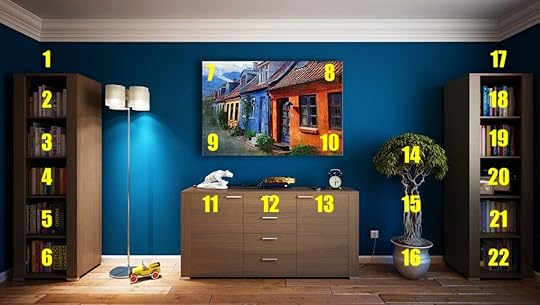
This is one example of how you can start structuring a Memory Palace for memorizing the name of every book in the Bible.
If you’re just beginning with this technique, this amount of information crammed into a single room might be too cramped.
That’s okay. Just make the Memory Palace journey more spaced out. You’ll need more rooms, but that’s okay. This memory skill is a marathon, not a race.
Also, I would suggest you consider having two Memory Palaces. One for the Old Testament and one for the New Testament. In this way, you can work on memorizing their books as two separate learning projects. It will make this learning project more manageable.
Two: Learn to Place Memorable AssociationsThe next step is to use your imagination to “pair” an association with a location in your Memory Palace.
For example, you would place an image or association that reminds you of the word “Genesis” in position one of the Memory Palace. It could be a Sega Genesis, or perhaps you remember the Genesis Device and Genesis cave from Star Trek II: The Wrath of Khan.
If those references don’t work, you could even think of someone you know named “Gene,” such as Gene Simmons, the bassist for the rock band Kiss. Even better, you can combine all three of these associations for striking effect when you revisit the Memory Palace journey.
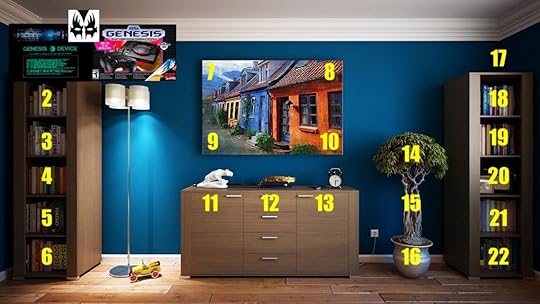
By placing a few words that sound like “Genesis” or are spelled in a similar way in a Memory Palace, it’s easy to remember all the books of the Bible.
Coming up with associations really just means looking at the letters of the words you need to memorize and thinking about similarities.
For example:
Exodus brings to mind Exxon oilLeviticus brings to mind Lev GoldentouchNumbers brings to mind the numbness you feel after a trip to the dentistTo start thinking up associations like this rapidly, have a look at the pegword method.
Three: Elaborate Your AssociationsIt’s not enough to assign associations. You also want to make them strange and striking using a process memory scientists call elaborative encoding.
So let’s say that you use the example of a dentist numbing your gums to help you remember that the book of Numbers is at position four in your Memory Palace.
To elaborate it, you want to imagine:
Feeling that numbness as a physical sensationHearing your voice trying to speak through numbed lipsImagine what it looks like to have a syringe injecting “Numbers” into your gumsExperience the emotions involvedInclude any tastes or smellsThink about the size of the needle and make it exaggeratedly huge
Using everyday life experiences like the “numbing” effect you experience at the dentist helps you remember the Book of Numbers.
These exaggerations only take a second per each book of the Bible. They will help you remember them with greater ease when you think back to where you stored them in the Memory Palace.
Four: Link Your AssociationsHow do you know the Book of Deuteronomy follows Numbers?
Often, the Memory Palace journey is more than enough. You just mentally move from station to station.
However, it also makes sense to use the link and story method.
One way you could help yourself memorize the order of the books of the Old Testament is to have the associations act upon each other.
In other words, it’s not just that you have Gene Simmons using a Sega Genesis controller to start the Genesis Device from Star Trek II.
You have this image interacting with the Exxon image. For example, you can have Gene Simmons firing the Genesis device at an Exxon station.

This mnemonic example shows you have you can use the linking method in a Memory Palace to memorize the books of the Bible.
Likewise, you can have someone named Lev or Lee or any “Le” image that makes sense to you fleeing from the Exxon station. By linking the associations from station to station throughout the Memory Palace, you give yourself an extra layer of “recall power.”
Five: Review For Long Term RetentionOnce you have all 66 books assigned with associations, you want to revisit the entire journey a few times to get all of them into long term memory.
We need to do this because memory and learning always require some level of repetition. The Memory Palace helps us manage the repetition and reduce the amount we need.
https://www.youtube.com/watch?v=8nOwZ...
Basically, you want to follow these patterns:
Forward through the Memory PalaceBackward through the Memory PalaceSkipping the stationsThese patterns will give primacy effect and recency effect to each station in your Memory Palace through a process memory scientists call serial positioning. It’s basically the same thing as using spaced repetition software, but much more powerful.
What makes it more effective than software are flashcards is what is called “active recall.” When we put a little bit of “pressure” on our memory to recall facts we’ve learned, our memories develop much faster.
Six: Follow Up With More Than MemoryLearning how to memorize scripture at any level is fun and easy.
But to really go the distance and get the material deep into memory, you want to learn it in context.
To make that process riveting:
Read as much as you can and also memorize facts about each bookWrite summaries of each book and your thoughts about themDiscuss often with othersListen to lectures about each book in orderDuring this stage, you can also add facts to the names of the books you’ve already memorized. For example, if you want to remember that Zephaniah is prophetic literature, you can add an image of a prophet profiting to the core image in the Memory Palace.
Seven: A Bonus Step For Those Who Prefer Flash CardsIf the Memory Palace technique is not an option for you, here’s the best possible way to use flash cards.
Instead of feeding yourself the answer on the back of the card, have a drawing that triggers your memory of the word.

A mnemonic example to help you remember a book of the Bible called Zephaniah
For example, you could draw a zipper to help you remember Zephaniah. You could even cut out a picture of Shania Twain or write her name beside the Zipper.
In the mnemonic example above, I have drawn a zipper and a few lines to suggest the letter “Z.” I’m no artist, but I’ve drawn a singer and given myself a clue by adding some of the lyrics from a very famous Shania Twain song.
Then, when looking at the card, the guessing process helps me form memories because it gives my brain a bit of a workout.
In other words, this form of “memory triggering” creates a brain game that promotes learning instead of cheating you out of it.
But chances are you can learn to love the Memory Palace technique, and this free course shows you how:
Remember All Of The Books Of The Bible With EaseAs you’ve seen, there’s a fast and easy way to memorize each and every book of the Bible.
Sure, it takes a bit of setup.
But given the amount of time and hassle it saves in the end, I’m confident you’ll find the frontloaded effort was well worth it.
The important thing is to embrace the setup. It takes different people different amounts of time, but anyone can do it. And the best part is that each and every bit of information you memorize brings you one step closer to God.
So what do you say?
Do you feel equipped to memorize the books of the Bible in order? Let me know in the discussion or feel free to enter any questions you have. I’ll chime in a.s.a.p.
April 14, 2021
Memory Recall and Retrieval: The Definitive Guide
 Memory recall, sometimes called retrieval, is the experience of remembering information.
Memory recall, sometimes called retrieval, is the experience of remembering information.
Here’s the catch:
It can only happen after at least these other levels of memory have succeeded first:
Only after these stages have succeeded do you have memory recall.
And now you know one of the major reasons we forget: Something has interrupted the retrieval and recall process.
The good news?
We can improve.
We just need to know more about how our memory works, so let’s dive in.
The 3 Forms of Memory RetrievalThe challenge of learning about recall is that it’s not just one thing. Memory retrieval happens in several different ways that are related to other stages of memory, but are ultimately different.
These forms are:
Free recallCued recallSerial recallFree recall allows you to retrieve information in any order. For example, if you watch a movie, you can tell your friend about the middle first, then the end before talking about the beginning. You’ve remembered enough to narrow in on different elements without getting confused or forgetting.
Cued recall, on the other hand, involves triggers. Here’s an easy way to think of this kind of retrieval:

Certain forms or recall can be compared to a chain or set of linking structures.
When memory athletes memorize lists of words, they combine elaborated associations so that one mnemonic triggers the target information in a chain.
When I did my memory drills this morning, for example, three of the words were blizzard, tea and piano. Tea and piano were easy to recall because I saw Ozzy Osbourne in a blizzard pouring warm tea on his piano. One image “cued” the recall of the others.
Note: Cued recall itself helped me associate Ozzy with the word “blizzard” because he recorded a 1981 album called Blizzard of Oz. When you create all your associations based on links that already exist in your memory, you can remember things a lot faster.
This kind of recall happens in everyday life too, even if you’re not a memory athlete.
For example, if you’re trying to remember the name of an actor, thinking about movies he’s been in can help trigger the name.
Serial recall involves recalling information in temporal order. It relates to episodic memory in some circumstances. Think of it as when you’re relating a series of events and talking in a “and then this happened” kind of pattern.
Does your mind really use just one of these kinds of recall at a time? Sometimes yes, sometimes no.

Recall is definitely not like replaying a movie. It’s more like assembling actors on a stage.
For example, you might have started giving details from the beginning of a story using free recall but realize your friend isn’t following the plot.
Your serial recall kicks in and that’s when you say, “let me start at the beginning.”
As you relate the plot of the movie, cued recall will likely help you add in nuance and detail that you would have forgotten otherwise.
What Is Recall Memory?One thing that defines memory above all is that it is always dealing with the past. Think about it:
Let’s say that you imagine a future scenario, like taking a trip.
Later, when you want to plan the trip, you are recalling that vision of the future up from the past.
So whether you’re speaking a language to become fluent or sitting for an exam, improving memory recall involves improving how you access the past.
Recall vs RecognitionOf course, you will have differences depending on the circumstances. For example, you might struggle in an exam because you cannot recognize several key terms.

Or, you could have an advantage because your recognition of some terms help trigger cued recall.
Complex stuff, isn’t it? Well, the devil is always in the details, which is why it pays to learn how to study effectively. You don’t have to memorize everything in order for recognition to help you recall the information you need.
The 4 Types of Memory RecallThe plot thickens!
The four kinds of memory recall are useful to know about because the brain encodes information in very specific ways.
Did you know that your emotional state dictates how you encode memories? This is just one reason why certain types of memory training can help relieve conditions like PTSD.
Let’s dig a little deeper into:
RecallRecognitionRecollectionRelearning
It’s possible to suddenly recall things without a trigger. For example, a memory of hanging out with your friends can arise for no reason.
Recall happens when you remember something without a cue or trigger.
For example, sometimes you just think about a friend out of the blue. The friend isn’t there, and yet somehow the brain has pulled out memories about her.
The Role of Questions In RememberingAnswering questions relates here as well. If you’re at an interview, you can only prepare so much. You’ll get questions you aren’t expecting, and yet you’ll find that you can remember certain facts without needing a trigger.
Recognition is when you know you’ve seen something before. You might not even remember that you’ve seen it before, but you still recognize it. Take the word “tiger,” for example. You probably don’t remember the first time you learned it, but you recognize it for what it is (a word) and the animal it refers to.
The opposite of recognition is sometimes called Jamais vu and can be deeply disturbing. Normally, however, recognition is positive and useful.
Recollection usually involves piecing things together using logic or objective reasoning. When you’re trying to recall information, you can deliberately follow a trail of information by leaping from one association to another.
Relearning is required when we forget things we’ve spent time learning. For example, you might have gone through great efforts to memorize vocabulary, but still can’t remember it.
To establish this form of recall and make learning much more fun, repetition might not be the answer. You might need to try a different approach, such as the Memory Palace technique.
How These Memory Processes Work TogetherIf your brain is reasonably healthy, I have very good news for you:
Most of what you need for long term memory recall happens in the background.
Not for all information, of course. But improving memory recall is why memory training was invented by our clever ancestors. When you want to be sure you can recall something, mnemonic devices and mnemonic strategies are a must.
But there are aspects of life that can interfere even with the best memory training efforts. These include:
Alzheimer’s Disease and DementiaLack of exercisePoor nutritionDehydrationLack of sleepIf you have concerns, it’s always a best practice to consult a qualified medical professional.
How to Improve Long Term Memory RecallI’m glad you asked, because helping you improve your memory is my passion.
First, I would suggest that you pick a technique and practice it for at least 90 days. You can choose:
The Memory Palace techniqueThe Roman Room techniqueThe link and story methodsMajor SystemPegword Method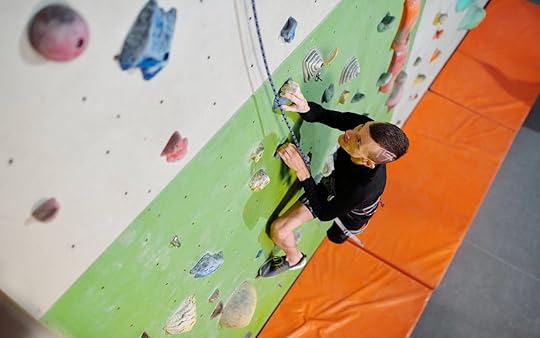
Like any skill, consistent practice is needed to develop the foundations and improve over time.
As you practice, have a goal.
Generic memory improvement is possible, but you can really accelerate the process by picking specific information to memorize. Here are some suggestions with training tips:
Memorize vocabularyMemorize scriptureMemorize a speechMemorize a songMemorize a textbookFor best results, I suggest that you add daily meditation. I teach a simple process in my book available through Amazon called The Victorious Mind: How to Master Memory, Meditation and Mental Well-Being.
How Do We Recall Memories On Demand?In a phrase:
Study your memory and practice the best techniques.

The more you learn about the science of memory, the more it will inform your practice.
And simply accept this simple fact:
Apart from certain situations with disease or brain trauma, retrieval failure is almost always a choice.
But now you are informed and know how to retrieve memory on demand.
Which of the practices I suggested on this page are you going to try first?
April 7, 2021
How to Think Logically (And Permanently Solve Serious Problems)
 If you want to solve life’s problems with greater ease, you should learn how to think logically, right?
If you want to solve life’s problems with greater ease, you should learn how to think logically, right?
Yes, but not so fast.
You want to make sure you’re using the right kinds of logic for the problems at hand.
You see, logical thinkers do what I’m doing now:
They put the breaks on such questions and start to spin them around.
Why? Because logic itself often involves digging deeper and analyzing different perspectives.
For example, one of the forms of logical thinking you’re about to discover would have you instantly ask…
Is there more than one kind of logic for solving life’s problems quickly? Or can I explore alternatives outside of logic?
A logical thinker might do the same thing to the very idea of a “problem” itself.
This is done by “mentally rotating” the topic at hand and seeing how it might in fact not be a problem at all.
It might be a path to a solution.
Yours Free: A Private Course With Cheat Sheets For Becoming A Memory Master, Starting From Scratch.>>> Click Here For This Special Free Offer.How to Think Logically: 9 Ways to Improve Your Logical Thinking Skills
At the end of the day, using the right form of logic is more about the best possible solution than the problem, but we do need to make sure we understand the problem first.
If you’ve listened to Elon Musk talk about first principles thinking, that’s a form of logic he’s using to help humans thrive on distant planets after earth dies. And communicate better here on our precious planet while we still can.
Those are real problems, and the right forms of logic are needed.
The best part?
There are a whole lot more ways to think logically to solve global and personal problems alike, so let’s get started
One: Take A Deep Dive Into Logical ThinkingImproving logical reasoning begins by knowing the types of logic at your disposal.

Exploring the history of logic is well worth your time because it will help you see how humans discovered these principles and refined them over time through practice.
As you’ll soon discover, many cultures have identified and used logical forms such as:
Philosophical logicInformal logicFormal logicModal logicMathematical logicParaconsistent logicSemantic logicInferential logicSystematic logicUsually what people who want to think more logically are actually after is the first category, or philosophical logic. This is also called “reasoning” and includes the skills of:
DeductionInductionCausal inferenceAnalogyDeductive reasoning is what we think of when we think of Sherlock Holmes, who builds his cases by arguing from general principles. He uses these to describe a specific series of events and solve various mysteries.

Inductive reasoning is essentially the reverse of this process. Instead of using general principles to arrive at specifics, you use specific details to generalize. For example, you might notice that I post on this blog almost every week, and use inductive reasoning to logically determine that I am a consistent blogger.
Causal inference helps you understand the scientific reason why and how things change. For example, why are you reading this article? I can logically infer that it is because you want to experience change and become a better thinker.
(Or maybe you want to experience more, such as all of these 11 benefits of critical thinking.)
Analogy or analogical reasoning involves making comparisons based on established examples or models.
For example, we know that nearly every memory champion openly admits that they have normal memory that doesn’t work especially well without using mnemonic devices. By analogy, we can infer that any person with average memory abilities can become a memory champion.
How long should you study logic? I’d suggest at least 90 days so you can get the bird’s eye overview and enough of the granular details.

Logical thinkers always make sure they have a bird’s eye view and the granular details at the same time.
Plus, as you’ll soon discover on this page, there are other fields you can read from to improve your logical thinking.
Two: Understand the Problems You’re Trying to Solve DeeplyEver taken a quiz and realized you answered before thinking about the question? You could have gotten it correctly, but your impulses took over and you lost precious points.
It’s not that you were being illogical. You just didn’t take the time to fully understand the question, and the reason why you failed to do so might have been logical. For example, from one perspective, in some contexts it might be perfectly logical to rush through an exam if you’re running out of time.
But generally, we want to be sure that we deeply understand the problems we face. That is why Abraham Lincoln famously said:
“Give me six hours to chop down a tree and I will spend the first four sharpening the axe.”
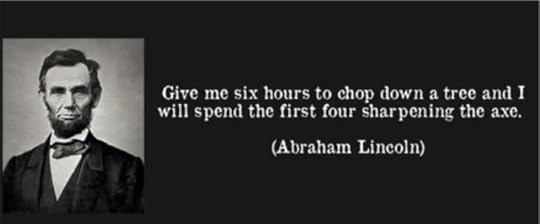
Lincoln is using an analogy here, one in which the “axe” stands in as an analogy. It speaks to spending the time needed to make sure you’re using the right tools for the job. Moreover, you make sure they are in top shape before you use them.
All the more reason to learn more about the different forms of logic. It will put more tools in your tool box and enable you to keep them sharp.
Here are 9 more critical thinking strategies to help you keep your axe sharp.
Three: Learn More About LanguageA lot of people struggle to think logically because they don’t understand enough about what words mean.
Logical thinking involves nuance, so the more you know about words and their meanings, the greater mental precision in decision-making you’ll enjoy.
To improve, here’s how to memorize vocabulary. It will help you add more meanings to words and add more definitions to those you already know. Learning word origins and how prefixes and suffixes work will help you too.
https://www.youtube.com/watch?v=mWz80...
On top of learning more about words and their meanings, learning about language and logic will help, such as studying syllogisms and logical fallacies.

Bonus tip:
Go deep and learn as much as you can about fallacies so you really know your stuff. It’s easy to fall into thinking traps if you don’t.
For example, some people like to accuse others of slippery slope fallacy, without realizing that there are actually six kinds of this fallacy.
If you want to think logically, it pays to be thorough. That’s why we’ll focus on thoroughness next.
Four: Read Quickly Without Sacrificing ThoroughnessImproving vocabulary is huge for improving logical thinking, and it will help you read faster.
But to improve your logical skills over time, you need to read thoroughly.
I suggest you read bigger books and more of them, starting with the key textbooks in your field of interest.
By going for the biggest and most authoritative books, you’ll be reading more logically.
Establishing foundations in your mind by reading authoritative textbooks will help you develop pattern recognition. This skill leads to faster use of the logical forms of inference we discussed in the first part of this article.
Five: Listen To Long Form Content
Short form content is causing people to make snap judgments and interrupt people before they’ve heard the full story. Logical thinkers protect themselves by practicing listening for long periods of time.
Not only is it helpful to read longer books, but you’ll learn to think much more logically when you listen to logical people think out loud.
Debates are a great way to do this and the Internet makes it possible to find many of them.
It’s important to pay attention to both sides of the argument, however.
As you listen, practice thinking yourself by mentally rehearsing the evidence you would provide in support of your views. Also think about how you would respond.
Another tip:
Notice the holes in the arguments proposed by the debaters and list out the ways you would fill in the gaps.
And if you want to remember more of what goes on during debates, Memory Palace Mastery is here to help.
Six: Expand Your Competence Using Multiple MediaI’ve just suggested that you experience “thinking out loud” and model it yourself.
But you’ll want to go beyond completing logical exercises in your mind. You should also:
SpeakWriteAnalyzeTo practice speaking logically, engage in as many discussions as you can about real problems. Sure, there’s a place for talking about movies and sports. But if you want to know how to think more logically, you’ve got to practice it yourself in real time.
Writing is always key for developing logical thinking, so I suggest you keep a journal. This simple practice will help you see your own thinking process and improve it over time.
Combined, you will have many opportunities for self-analysis. If you can record your conversations and look at transcripts of them, all the better.
Seven: Ask Better Questions

A lot of us ask the typical W5 questions and let it rest at that:
WhoWhat WhereWhenWhyHowBut to practice thinking logically, you want to go beyond these questions. Ask in addition to these questions:
According to whom?According to what precedent?Where isn’t this true?When hasn’t this been the case?Why now?There are many variations on these questions you can ask, and I cover more along these lines in our community’s post on how to think faster.
Eight: Learn Game TheoryOne of the lesser known ways to learn logical thinking is to study games and metagames.

In brief, game theory studies areas of competition where people regularly make decisions. These decisions are influenced by other people in the area and in turn influence others.
By modeling the ways people interact in competitive contexts, you can learn to think more logically and avoid cognitive biases that harm your performance in life.
You’ll enjoy avoiding many problems because game theory helps train your mind to anticipate the possible outcomes of various decisions. By thinking through consequences in advance, you save yourself a lot of trouble.
Note: You can perform game theory on the past as well by thinking through what would have happened had people acted differently. This is called working through the counterfactuals of a historical situation and can be used on your personal life and large groups.
Some people think that game theory has limited value for everyday life, but I don’t think they’re being… logical about that. We all find ourselves in situations where we are influenced to act in certain ways and understanding these pressures will help you respond in much better ways.
A key example is by using the Monty Hall Problem or Three Door Problem to make decisions.

Logical exercises like The Monty Hall Problem help you think through what to do when you face choices in life.
Some people squabble over whether it is in fact logical to use this problem in life, but I can attest to its value.
For example, when I see an opportunity to do something different and feel like I want to default to my previous choices, I bring this game theoretical example to mind and remind myself to travel the “path less travelled.”
Is the math on my side?
I think so, because I’ve gone on many adventures that logic dictates could not have happened had I chosen to stick with the same thing.
To learn more about these situations, check out the stories I share in The Victorious Mind: How to Master Memory, Meditation and Mental Well-Being.
Nine: Use Rules And Embrace LimitationsI didn’t use to like rules. In some ways I still don’t.
But one day I was enjoying dinner with Tony Buzan, memory expert, mind map innovator and co-founder of the World Memory Championships.
I told him about how I sometimes would switch memory systems while under time trials for numbers and playing cards.
He said, “The rules will set you free.”
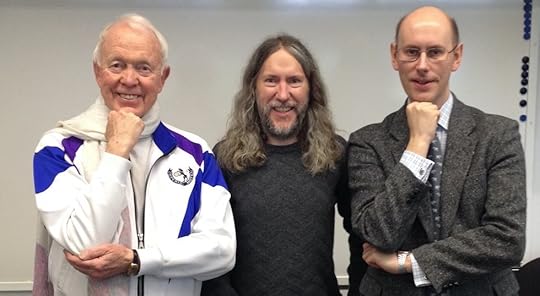
Tony Buzan with Anthony Metivier and Phil Chambers
This is important because life, as in memory training, often gives us the opportunity to use multiple techniques.
For example, when remembering numbers, we could choose the Dominic System or the Major System, though as I discovered, it doesn’t pay off to switch from one to the other during a time trial.
But by willing to limit ourselves and stick to the “rules” of just one system, we can improve our performance.
This is true in life too, where you can learn certain rules of thumb and stick to them.
To take another example, learning the logic of Chip and Dan Heath’s W.R.A.P. technique and practicing it over time has been tremendously helpful for me.
In fact, it’s so helpful, it is “illogical” to forget not to use it when making decisions. That’s why I memorized it using a special memory technique called ars combinatoria, something that was very important in the history of how logical thinking developed.
What rules of thumb that help you “limit” yourself to a productive form of thinking and decision making can you adopt?
Thinking Logically Is A Rewarding Process To Enjoy For LifeHave you enjoyed learning these nine ways to improve your logical thinking?
I hope so and hope you will make practicing some of these approaches a personal hobby.

You can easily practice logical thinking while meditating or working with an alternative to logic like Zen.
As a final tip, it would only be logical for me to recommend the opposite of logic.
You see, there are practices like Zen which evolved to help us see and experience the limits of logic. Zen turns language against itself to help us experience mental relief from the problems we think so hard about.
One of the best books that situates the topic in the larger realm of computational thinking for both humans and machines is Gödel Escher Bach. For a collection of koans to explore, The Gateless Gate by Mumon is an interesting source.
I mention the opposite of logic not only because it is logical to do so. To fully experience the rewards of logical thinking, you need to be able to step outside of thinking altogether.
Questioning deeply is not enough. We need to question the process of questioning itself as a lifelong learning habit.
So on that note, let the questioning begin. Let me know which of these ways to improve your thinking you’re going to try out and what questions about logic do you still have?
Yours Free: A Private Course With Cheat Sheets For Becoming A Memory Master, Starting From Scratch.>>> Click Here For This Special Free Offer.
March 31, 2021
15 Secrets To Expanding Your Mind And Accessing More of Your Brain
 Want to expand your mind?
Want to expand your mind?
I sure have enjoying increasing my mental skills and pushing the limits of how much the human brain can learn.
Being the owner of an expanded brain comes with so many benefits too. For example, you can:
Remember moreMake better decisionsThink fasterConnect abstract ideasPlan further into the futureEnergize yourself when you’re downEnjoy mental peace on demandThe best part?
You don’t have to be so open-minded that your brains fall out.
After all, there are a lot of sharks out there teaching woo-woo “techniques” directed at the gullible.
But you can learn how to expand your mind based on scientifically valid processes that work quickly.
Let’s dive in.
How To Expand Your Mind: 15 Activities And TipsThe following practices are in no particular order of importance.
Usually they can be mixed and matched for maximum impact (such as juggling while reciting the alphabet backwards.)
One: Juggling With Added ChallengesHang on, you might be thinking.
Juggling?

Well, yes. It expands your mind for quite a few reasons.
Research shows that it:
Increase connections between the neurons in your brainImproves visionImproves memoryImproves oxygen and blood flow or improvement cognitionTo get all the research in one highly readable account, check out The Hand: How Its Use Shapes the Brain, Language, and Human Culture by neurologist Frank R. Wilson.
To take your juggling to the next level, include other skills, such as reciting from memory. I share how I learned to do this here:
https://www.youtube.com/watch?v=7yTiX...
To get started, get yourself some suitable balls and make it simple. Add one level of complexity at a time.
When you’re ready to supplement juggling with memorized material, I suggest you start with a song you already know.
Then increase the challenge by reciting new content you’ve only recently memorized. You can also juggle while completing many of these powerful brain exercises.
Practice at least four times a week for best results.
Two: Seek Out Incredible Thinkers

If you want to know how to use more of your brain, you really can just let it rub off on you.
We know that people learn by modeling others, so one of the easiest and fastest activities for stimulating mental expansion is simply to be around great thinkers.
Now, do you really have to be in the same room?
Yes and no. Obviously, listening to podcasts and watching videos of great debates can play a role.
But I’m pretty confident you’ll pick up more thinking skills when you’re together with people who regularly use more of their minds.
Options include:
Attending public lectures and mingling Going to meetup groupsJoining a chess clubGoing to a memory competitionHanging out with smart friends and family members

If you really can’t find people offline, seek out online discussion groups and forums where people demonstrate their expertise.
It can take some time to find the right mix, but it’s worth the search. The search itself should expand your mind too.
Just keep this principle in mind:
If you’re the smartest person in the room, it’s probably the wrong room.
Three: MeditateMeditation is all the rage these days, and for good reason.
Few mental activities have produced as much scientific evidence of the benefits you can experience than meditation.

Here’s a guide on how to meditate for concentration and focus that includes some of the best science.
I suggest you start simply:
Set a time for less time than you think you can sitSit in a chair or on the floorFocus on your breathLet your thoughts flow unobstructedWhen the timer rings, sit for just a little longerJournal to capture your reflections on the experienceFour: Use a Memory PalaceIf you’re not familiar with this incredible mental tool, it works like this:
You select a location such as your home. Then you identify a journey you can easily navigate.
Like Hansel and Gretel, you place “crumbs” of association along this journey that help you remember information.

Using the same Memory Palace, you follow a couple of patterns that rapidly ushers the information into long term memory.
Once you have this simple tool under your belt, you can use it to extend your knowledge of many topics and skills. For example, you can:
Learn the planetsMemorize the presidentsRemember the periodic table of elementsRecall geographical information from mapsAbsorb new vocabulary within minutesAnd that’s just for starters. To master this skill, I’d like to invite you to this special program:
Five: Read With MomentumUnfortunately, there’s a lot of hogwash out there about so-called “speed reading.”
Yet, you can learn how to read faster.
The trick is in selecting books worth reading – books that will actually expand your mind.
To do this, I suggest you create a vision statement. What is it that you want to accomplish or experience in life?
Next, do some research and identify 1-3 key texts on that topic.
For example, when I wanted to learn about consciousness, I quickly came across a book called Gödel Escher Bach.

To find more related books, I simply looked at the list of works cited and picked a couple. This process quickly led me to reading both Spinoza and Hume.
Of course, you’ll find that not every lead proves worth the time in the end. But learning how to separate the wheat from the chaff cannot take place if you don’t encounter a few bad apples along the way.
In other words, bad books also expand your awareness of what doesn’t work too. It’s win-win no matter how you look at it from this perspective.
Six: Practice Philosophy In Everyday LifeIf you do any serious amount of reading, you’ll wind up covering a fair amount of philosophy.
But to enjoy an expanded mind, reading is not enough.
You have to do philosophy.

There are a few ways to do this.
For one thing, Gilles Deleuze thought that doing philosophy involves the creation of new concepts.
Now, “new” doesn’t necessarily mean “unique” or “original.” There’s also the power of concepts that are “new to you.”
For example, I often come up with my own pet phrases for concepts that have certainly existed before. But because I craft them by interacting with them, they take on a special emphasis.
Nir Eyal presents research from science on how and why this kind of interaction helps people focus and gain traction in life. Ramon Llull, Nietzsche and many other people have promoted this form of self-invention throughout history too.
Seven: Learn Ars Combinatoria (The Art of Combination)Ars combinatoria is a big topic, but here are the broad strokes:

Basically, you create a Memory Wheel. On this wheel, you place individual letters. These letters represent larger concepts.
For example, if you want to remember how to act in certain situations, you would place letters on your Memory Wheel to remember those actions.
Instead of arguing, for example, you might choose to:
S: Say nothing
T: Take a deep breath
O: Open the dialog with a new question after suggesting a quick
P: Pause
Now, you might be thinking…
Hang on! Learning acronyms sounds like limiting the mind, not expanding it.

I understand the objection, but in this case, nothing could be further from the truth.
Sometimes by limiting ourselves to pre-memorized options, we wind up increasing our options. Then we’re able to learn more and enjoy the benefits of objective reasoning as a result.
It’s a big topic and there are more ways to use this technique for expanding your mind. Learn more about ars combinatoria today.
Eight: Learn Multiple LanguagesIf you really want to use more of your brain, learning just one other language won’t do.
Of course, there are challenges when it comes to learning more than one language at a time. But with strategy these are readily overcome.
The benefits of learning another language are huge because even just a small amount of multilingual study will:
Reveal connections between culturesTeach you the history of how languages evolved historicallyStimulate critical thinking skills thanks to exposure to multiple points of comparison

You’ll also meet many more people you can chat with, and some of them will be the “next level” thinkers we discussed above.
Nine: Learn New Manual SkillsWe’ve already talked about juggling. But there’s also:
Musical instrumentsTypingFencing (swords and yes, building picket fences)DrawingKnitting, etc.You might laugh at knitting, but one of my best friends is an avid knitter. He’s really brilliant and very successful and attributes some of his ability to concentrate and remember conversations to his knitting habit.
I’ve certainly noticed he pays more attention when we speak even though he’s clacking away at a new sweater or scarf.
Ten: Practice Multisensory Visualization

A lot of people visualize, but they make a weird mistake:
They limit visualization to seeing mental pictures.
This habit prevents them from expanding their minds effectively.
Instead, make sure you touch on at least eight of the major multisensory modes. We call them the “Magnetic Modes” in our community.
Try these visualization meditations to get started in a way that incorporates multiple sensations.
Eleven: Practice Self InquiryIt can take a while to understand the idea of asking yourself questions. It certainly took me a while.
But it’s very powerful and can help you experience consciousness in a whole new way.
Basically, the tradition is very old and appears in everything from Advaita Vedanta and Zen to hermeticism and Cognitive Behavioral Therapy. I believe it has stood the test of time because it is an incredibly powerful cognitive activity.

My favorite questions are:
How do my thoughts behave?Are my thoughts useful?What value do my thoughts have?Who is having this thought?Where is this thought taking place in my mind?There are many more and the core idea is that they offer a “pattern interrupt.” Instead of being constantly lost in thought, you manage to experience the consciousness that your thoughts arise in.
This leads to experiences of tremendous mental freedom, as I shared in this TEDx Talk:
https://www.youtube.com/watch?v=kvtYj...
Twelve: Macro and Micro TravelThe more places you see, the more references you’ll have to locations, people and experiences.
This is true at multiple levels of travel:
Other countriesOther cities and states or provincesOther parts of your city

No matter what’s going on, you can always take a walk to a part of the area you live in to expand your mental model of the world.
Thirteen: JournalKeeping a journal has been proven to improve memory and expand your experience of time. (See Richard Wiseman’s 59 Seconds for the research data.)
You can journal in a number of ways at the same time, including:
Progress journaling (goals, books you’ve read)Biographical journaling (daily events)Gratitude journaling (things you’re thankful for)Dream journaling (recording your dreams)The more you practice different styles of journaling, the more you’ll find the space in your mind expanding.
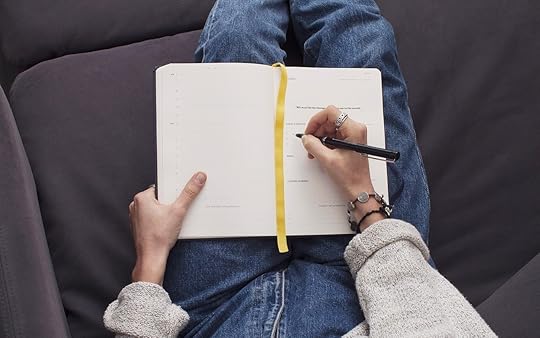
Next time you’re meditating, try this simple exercise:
As you recite the alphabet from A-Z, think of people you know and embrace them with love in your heart.
For example:
A – AdamB – BonnieC – CarlEtc.Within just a few moments, you will have created positive emotions for multiple people.
Here’s another exercise:
The next time someone annoys you at the grocery store or when you’re backed up in traffic, catch yourself. Hold the person who has irritated you in your heart and forgive them.
You’ll have more space in your mind for better quality thoughts this way.
Fifteen: Explore Your DislikesFor awhile, klezmer was not exactly the kind of music I liked.
However, to improve the quality of my mind, I took it upon myself to dive deep into several genres of music I normally avoided.

I’m still not a huge fan, but as with embracing those we don’t like in our environment, spending some time with material you normally dismiss gives you more perspective.
The best part?
It makes you appreciate the things you do like a lot more.
How To Use More Of Your Brain HabituallyThere are many more activities you’ll come up with along your personal journey of mental improvement. And I hope you’ll share your updates along the way.
To make sure that these strategies become habitual, schedule the activities in a calendar and show up.
Plan to explore each for at least 90 days at a rate of at least four times per week. If you can get more sessions in, all the better.
This approach works because your brain forms neuronal connections through repetition.
So what do you say? Are you ready to expand your brain’s capacity?
Dive in and keep us posted on your progress. I’ll be right there with you!
March 24, 2021
How to Learn a New Language Fast: A Step-by-Step Guide
 If you’re looking for how to learn a new language fast, chances are your emotions are getting yanked around.
If you’re looking for how to learn a new language fast, chances are your emotions are getting yanked around.
On the one hand, you’re filled with tremendous excitement!
You can almost taste the triumph as fluent sentences pour from your mouth.
On the other hand, you’ve heard that your target language is really hard…
And you’re worried about memorizing thousands of words and the billions of potential sentences you’ll need to master.
Let’s put a stop to all those worries right now.
How?
With a small set of practical strategies. And let’s amplify the wonder, excitement and truly miraculous experiences you can expect by treating the language learning journey for what it should be:
A journey, not a destination.
This mindset is really important because not one amongst us is truly fluent in our mother tongue. It’s not even a remote possibility when you look at the Oxford English Dictionary (if English is your mother tongue).
Yet, when you set proper goals based on L.U.C.K., the fastest way to learn a language can be yours.
What is L.U.C.K.?
It stands for “learn using correct knowledge.”
And that’s exactly what you’ll get on this page. Keep reading each and every word so that you know exactly how fun and easy learning any language can be.
How To Learn A Language Fast: 15 Tips Step One: Learn How to Teach Yourself A Language FirstEven if you find the best teacher on the planet for your target language, they can only take you so far. You have to be able to teach yourself too.
To do that, you’ll want to learn the “meta learning” skills that make learning a language possible. These can be broken down into what I like to call The Big 5 Of Language Learning:

These five elements are based on a scientific principle called the levels of processing. They mean that you need to learn how to combine:
MemoryReadingWritingListeningSpeakingIt’s not a question of which one is most important. It’s the holistic combination of all them that matters in the end.
That said, there are ways to combine listening and reading, for example. You can do that by combining certain tools, like the story narration program I feature on my best language learning software post.
You can also get great writing practice at the same time you speak, by repeating what you put on the page verbally either before or after putting it down on paper.
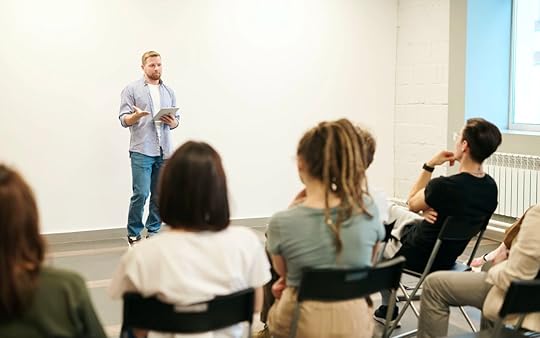
Both writing and speaking are very important for learning a language. By reading aloud what you’ve written, you double-down on the benefits and learn faster.
Any decent language learning class will make you go through these steps, but if you don’t also get yourself to do it on your own, you’ll struggle to learn your language.
Step Two: Develop A Positive MindsetSo many people ask, How hard is it to learn a new language?
What if this is the wrong question?
What if a better question is: what are the mental strength resources I need to keep consistent over the long term?
When it comes to language learning, you’ll want to develop skills with:
Setting realistic goalsFor example, if your language has a character set or new alphabet you need to learn, this might be your first goalIf you already know the alphabet, then your first goal might be how to introduce yourself, plus fifty new words related to some of your interestsCreating a practical scheduleShowing up consistentlyManaging your expectationsUnderstanding the different types of motivation when learning languagesAccept that mistakes will be made and be willing to learn from themExploring and acquiring the best language learning materialsDeveloping the courage to speak the language
Use a journal to set your goals. It will help you gain clarity on what really matters because you can see your intentions more objectively.
Some people will need to spend more time learning these skills than others. But they can all be learned and improved as you go.
Step Three: Choose The Best Possible Language Learning MaterialsThis step is tricky, but also very doable.
First, just accept that some risk is involved. You might end up buying a book or course that just doesn’t suit you.
This circles back to mindset, particularly managing your expectations.
Personally, I treat it all as research and don’t get emotionally involved.
In fact, I allow myself to be open to revisiting any resource I’ve purchased again in the future, because we as humans can be tremendously fickle. It might not be that the book or course is bad. It’s entirely possible that we were either not ready for it yet, or just having a bad day, week, month or year.
A subset of choosing the best materials for learning a language is to limit the amount of sources. When learning a language, we do want tons of input – but that doesn’t mean you want it from dozens of sources.

There is an overwhelming amount of language learning material to choose from. Set limits and focus on completing just one book at a time.
Instead, I suggest you take a tip I’ve benefited from. It comes from my friend and language learning expert Olly Richards, who advises that we pick at maximum:
One bookOne video or audio program One teacherBy doing this, we give ourselves ample opportunity to experience the levels of processing effect while not overwhelming ourselves with materials. Embracing limits helps us maximize our investment in the materials and enjoy the benefits of thoroughness.
Again, you might find you acquire materials that simply don’t work. It happens. But overall, limiting what you bring into your learning life and maximizing your thoroughness with those materials will pay off soon.

Setting limits leads to success!
My personal rule of thumb is to stick with something for at least 90 days. When I was learning Chinese, I did this with just one audio program, one book and one teacher and am confident it helped me be much more successful than I would have been by constantly throwing new “shiny new textbooks” in my path.
Step Four: Learn To Use Memory TechniquesSome people object that adding mnemonics for language learning only adds one more thing they have to learn.
I understand the objection.
But it’s ultimately illogical.
It’s kind of like saying learning to write the alphabet adds just one more thing to the goal of writing words and sentences.
Or it’s like saying you have to learn how to build airplanes before you build an airport. All of these examples make a kind of sense, but they still aren’t valid objections.

Learning mnemonics can feel like having to build an airport before you can fly a plane. But the rewards are worth it and just as profound as the miracle of international travel.
In reality, learning to use memory techniques for language learning well is one of the best ways to rapidly accelerate your practice. They help because:
The Memory Palace technique allows you to rapidly scale the number of words and phrases you can rememberEffective association through multi-sensory visualization makes words and meanings incredibly “sticky”Using the method of loci mentally replicates spaced repetition software without sacrificing the benefits of active recallIn fact, the memory techniques optimize how you practice recalling information in a way that strengthens your memory overall.
Step Five: Immerse Yourself With Sensible Input And Strategic ChallengesIn the beginning, you might not understand anything. But as you learn, your pattern recognition will go up.
There are a number of ways to keep increasing your sensible input. These include:
Meet regularly with a native speakerBe sure to bring a picture-based magazine. Learn to ask, “What is that?” and keep pointing at pictures. Record the sessions with your smart phone and listen back, trying to guess what you were looking at in the magazine. Watch movies with subtitlesWhen you find vocabulary and phrases you want to learn, write them down and memorize them. I recommend you create your own flashcards by hand using drawings and colors, like this:
It’s fun and easy to create your own mnemonic devices on flash cards. It’s also generally much more effective than using language learning apps.
Complete courses and textbooks thoroughlyThese will help increase the amount of patterns you’ll recognize as you continue your exposure to the language you’re learning.Read short stories and news articlesYou can do this by just reading or by creating your own translations as you go. My friend Luca Lampariello shares a number of tips on how to use translation to increase your fluency.Take a courseStrictly speaking, taking a course isn’t necessary. I’ve done it both as a beginner and as a more established student and find saving it for later much more useful. If you take a course, make sure the teacher uses the target language primarily. You’re not there to improve your mother tongue or teach it to them.Speak with natives onlineTools like italki and the Tandem app are great sources for finding people to speak with during dedicated sessions or in small doses by sending and receiving audio texts.As a rule of thumb, I like to give new people 2-3 sessions before deciding if they are a fit or not. Follow instagram and other social media accounts in your target language.Learn songs in your target language.With all of these activities, you need to use your judgment. If you go for something too advanced, you’ll just get frustrated.
By the same token, if you aren’t challenged, you’ll quickly get bored. Get out of your comfort zone. It’s where you’ll find the treasure you seek.
Step Six: Invest Enough Time For Daily Practice (But Not Too Much)[image error]
People think you have to spend five to six hours a day while learning a language. This just isn’t true.
By the same token, you’re not going to get very far with just 5 minutes a day.
That said, if you’re strategic about it, you can learn a lot in 15-30 minutes a day. The trick is in breaking up the activities and making sure you’re getting in enough practice of all The Big 5. A schedule like this can work wonders:
Mornings: 15 minutes memorizing vocabularyAfternoons: 15 minutes of reading and listening using narrated short stories or news articlesEvenings: 15 minutes watching a movie (or the whole movie with about 15 minutes spent capturing words and phrases you find interesting)Then, the next morning, you can memorize the new vocabulary you’ve gathered from the day before.
The exact amount of time you spend is not nearly as important as the consistency and focus you bring to each learning session.
Also, vary the routine. If the routine I suggested is something you use on Mondays, Wednesdays and Fridays, do this on Tuesdays and Thursdays:
30 minutes in discussion with a native speaker30 minutes reviewing the discussion recordingIt’s also important to schedule breaks. Taking a week off once in a while actually does your brain good when you’re learning.

Scheduling breaks is important, as is learning how to get back on the horse when you fall from your plan.
The trick is making sure you don’t take off too long and then struggle to get back on the horse.
Here’s a simple tip:
Make sure your language learning sessions with speaking partners are booked in advance. That way, you’re taking some highly beneficial time off, but not with a dangerous open end.
Step Seven: Build Your Own Vocabulary And Phrase ListsMany people ask, “How long does it take to learn a new language?” I believe the answer should be that the journey never ends.
But for those who are in a hurry, they often come across the idea of “frequency lists.” These are compilations of words that are used the most often in any given language. If you’re learning Spanish, these lists can be especially seductive.
And they definitely can be useful. In some cases, they will accelerate how quickly you can get started learning the language.
However, they’re also incredibly limited.
Why?
Because no maker of such lists can know what contexts you’ll find yourself in or what you’re going to want to talk about.
That’s why when you’re reading news stories and translating them, it’s important to focus on information that’s interesting and relevant to you.

Making your own lists of words and phrases to learn is incredibly important. Be prepared with paper or a journal to capture what you want and need to learn.
You’ll move along so much faster if you let yourself be informed by word lists, but also always take care to build your own. There are no “right” words to focus on and true fluency comes from being able to accomplish missions.
Step Eight: Focus On Systems As Much As, If Not More Than GoalsGoals are important. But even more important are the systems that help ensure that you actually accomplish your language learning goals.
Let’s say your goal is to learn 50 new words by the end of the week. Great! That’s perfectly realistic.
But it’s also meaningless if you haven’t sat down and charted out a systematic means of getting yourself to accomplish the memorization of those words.
I suggest developing an if-this-then-that language learning habit stack.
For example, let’s say you’ve developed a Memory Palace strategy and you’ve spent some time gathering the words you want to memorize. Your habit stack might look like this:
If I wake up, I go immediately to my learning place.If I go to my learning place, I open my Memory Journal to the list of words I’ve prepared. If I have my list, I start with the first word and memorize it using Station One of the Memory Palace.If I have memorized one word, I move on to the next. If I have memorized 10 words, I put my Memory Journal away and start mentally reviewing the words. If I have reviewed my words 3-5 times during the day, I test by writing them out by hand and speak them out loud.

This is a little system that drives you towards completing the goal. And if you do something like this every day, by the end of the week, you will have memorized 50 words.
You might think even something as tight as this set of steps will take a long time. But nothing could be further from the truth. Once you get the hang of it, you’ll wonder how you ever lived without such a simple and elegant system.
Step Nine: Use The Language Every DayHave you learned only one word so far?
No problem. Use it.
Or do you have only a few hundred words?
The principle is the same. Use what you’ve got.
Talk to yourself as you’re walking down the street.
Tell other people about the phrases you’ve learned and repeat them.
Sing songs in the language you’re learning.
Make your shopping lists in the language you’re learning instead of in your mother tongue.

Learning songs in a foreign language is a great way to learn vocabulary and phrases.
You need to get the words into the muscle memory of your mouth and your mind.
If you dedicate yourself, everything from brushing your teeth to tying your shoes and kissing your loved ones to sleep at night are excellent opportunities to practice.
Step Ten: Use History And Culture As Your “Secret Weapons”As I’ve been learning German, Chinese and Sanskrit, I’ve made sure to not stop at the language itself.
Reading novels, books of history and philosophy from the cultures not only gives you more exposure to the language. It helps you understand the historical and cultural forces that shaped it throughout history and continue to exert an influence.
I would also include serious study of geography and topics like social science.
Knowing about the region can help you understand a lot about how the language developed, and understanding issues related to psychographics can help you fall in love with certain matters of grammar.
This latter point is important because a lot of people waste time trying to understand the “why” of grammar instead of simply accepting it for what it is.

That said, John McWhorter has shared some compelling reasons to believe that our language differences don’t distinguish us psychologically as much as we might believe.
https://www.youtube.com/watch?v=VQRjo...
These are interesting points to consider, and all arrive at the same benefits for you:
When you immerse yourself in the culture and its history, you’ll have more things to talk about with native speakers.
This point is especially important if you’re introverted or generally shy. But read widely and you’ll never be at a loss for conversation topics.
Step Eleven: Don’t Take Yourself Too SeriouslyA lot of people get hung up on little things when learning languages. They become perfectionists, without realizing that you need to make mistakes in order to learn.
Develop the ability to laugh at yourself. If you struggle with self criticism, learn these Two Easily Remembered Questions That Silence Negative Thoughts. I’ve learned them in both English and Sanskrit, and that has been tremendously useful.
[image error]Being able to give and receive criticism is a powerful skill when learning languages.
Also, don’t be afraid to give criticism.
For example, if a teacher is frustrating you by correcting you too often, ask them to scale it down.
When I submit writing to language teachers, I ask them to please point out just three errors. That way I can keep things light and fun and focus on the biggest aspects to improve without overwhelm.
But if you meet people who can’t help you or make the journey too serious and destroy all the fun, find someone else. There are plenty of fish in the sea.
Step Twelve: Be A Stickler About PronunciationLet me be honest with you:
Pronunciation has always been my biggest struggle when learning languages. It could be genetics. I’ve been tone deaf my entire life.
Yet, I have managed to learn to play multiple musical instruments and a few languages.
Time and time again, I always wish I focused more on pronunciation.
Enter a concept called “chorusing” that I learned from my friends at Outlier Linguistics.

“Chorusing” is a great way to improve your pronunciation.
In brief, this technique is the audio version of using flash cards.
Using recording software like Audacity, you record a native speaker speaking a word or phrase. Then you copy and paste it multiple times so you can hear it repeated and really dig into the nuances.
Next, you record yourself speaking it on a separate track.
Since a good audio recorder will let you see the sound waves, you can try to make your voice match certain characteristics visually.
But the more important aspect with this technique is you are training your ear to hear yourself and correct your pronunciation through direct comparison.
The time investment on this technique is admittedly intense. But it’s well worth the effort, especially if this is a weak point for you as it is for me.
Step Thirteen: Use Cognates But Beware Of False FriendsMany languages have words that are the same or very similar.
In Spanish, for example, you’ll find thousands of words that are very close in sound and meaning to their English equivalents. You might also see these words referred to as “loan words.”

However, there are also a number of false cognates that mean very different things.
Always check so that you don’t wind up creating foundational errors that may be difficult to correct later.
Step Fourteen: Add Another Language After You’ve Earned The First OneIt’s normal to want to be a polyglot, or someone who speaks 3-5 languages well. But as far as I can tell, all the successful polyglots got there by being willing to establish mastery in just one language at a time.
Once you’ve done that, you will be very well-versed in the meta learning skills that will help you proceed in leaps and bounds towards substantial speaking and understanding abilities.
And then you can do cool things like what my friend Benny Lewis calls “laddering.” This technique is when you pick a textbook or course in a language you’ve already learned to start covering the next one.
For example, most of my sources of material for learning Chinese have been from books written in German.
 I love laddering, but am very glad I stuck with German long enough to enjoy great confidence speaking it before moving on.
I love laddering, but am very glad I stuck with German long enough to enjoy great confidence speaking it before moving on.
One exception to this suggestion that some people find useful is to spend some time learning Esperanto.
The reasoning here suggests that Esperanto is especially suited to helping learners understand more about how different languages work.
Frankly, I’m not convinced you have to become a grammarian or linguist in order to become fluent in a language. If anything, the world is packed with people who are experts in those topics who can’t even speak one other language.
But if you’re still stuck, it might be worth looking into Esperanto for these reasons.
Or, you could look at a root language to see if it helps wake up your brain.
For example, a small amount of time learning Latin can open up Spanish or Italian for you to an incredible degree.
However, at the end of the day, the old saying that the hunter who chases two rabbits rarely catches either stands up here. Split your attention between more than one language only at great risk.
Step Fifteen: Travel If You Can, But Don’t Make It A MustI’ve been lucky and was able to spend years of my life in Germany. During that time, I made sure to live with people who spoke little or no English to make “total immersion” something from which I could not escape.
But I didn’t have the luxury of living in China when I first started learning the language. And it was absolutely not necessary.
In fact, after less than 3 months of studying the language, my time in the country was so distracting, I didn’t have time to study it at all. And that is typically what happens when you try to combine tourism with immersion.
[image error]
Instead, use the tips on this page to create proper goals and the effective systems that will place you in the company of your target language each and every day.
Then, when you do get to travel, you can relax and focus on speaking and understanding much more around you. You’ll have earned it.
The Best Ways To Learn A Language Begin And End With You And Your StrategyA lot of people think that kids have some special advantage when it comes to learning a language. This couldn’t be further from the truth.
In reality, kids take years to speak proper sentences, and many more to read and write at a sophisticated level.
But because adults have all kinds of skills in their mother language, impulse control and the levels of discipline needed to make it on the job market, you have a distinct advantage.
You really just need to bring everything you know about being a mature and responsible adult to the process of learning a language. But that doesn’t mean you don’t bring childlike curiosity and fun to the game.
The benefits of speaking a language are immense, ranging from higher salary to the brain health benefits of bilingualism.
So what do you say? What language do you want to learn and are you feeling empowered now that you have these 15 power tips for learning it?
March 18, 2021
Reflective Thinking: 5 Powerful Thought Strategies For Improving Your Life
 Want to know why the practice of reflective thinking has lasted for thousands of years?
Want to know why the practice of reflective thinking has lasted for thousands of years?
Because being a reflective thinker improves your life.
And not just in abstract ways.
The substantial improvements you can expect to experience range from:
Improved memoryOptimized decision makingReduced stressBetter relationshipsSuperior objective reasoning skillsSo if you’d like a reflective thinking model you can add to your life, stick around.
I’ve been practicing reflective thinking since I was a teenager and this post is for you.
What is Reflective Thinking?I first came across this form of mental exercise when I read Albert Camus’ The Stranger in high school. It was the first time I realized it was possible to lead an interesting life, one much more exciting than the dreadful future I felt I was facing at the time.
Camus was an existentialist, which essentially boils down to using “radical honesty” and accepting the limits imposed upon our lives. We do that by reflecting on the human condition for what it is, not what we want it to be.
As I soon discovered, this tradition goes back at least as far as the Ancient Greeks. Socrates, for example, said three memorable things that demonstrate reflective thinking in action:
“The unexamined life is not worth living.”“I know that I know nothing.”“Look at how many things there are which I don’t want.”In each of these examples, Socrates is turning the lens upon his experience of consciousness. He is looking at both the bigger picture of life and demonstrating something even more critical:
He is showing that self-examination by being a reflective thinker gives life more value He recognizes the limits of his knowledge (like an existentialist)He divides his quality of mind from external, material objects in the world

By examining these statements and what they mean, we can develop a working definition of reflective thinking.
It is a form of self analysis that creates a more valuable experience of consciousness by revealing what is truly important in life. Its main requirement is radical honesty so that you avoid self deception.
Major Philosophers And Psychologists Who Used Critical Thinking And ReflectionThe psychologist Albert Ellis remarked that he never would have discovered the processes that ultimately led to cognitive behavioral therapy (CBT) if “I had not been strongly influenced by philosophers rather than psychotherapists.”
(You can find this quote in the Albert Ellis Reader.)
This is an important observation (and example of self-reflection) because philosophers were doing the work of psychologists long before Sigmund Freud arrived on the scene.

Albert Ellis was influenced more by philosophers than his fellow psychologists when working on a form of reflective thinking to help people lead better lives.
In fact, in the Minutes of the Vienna Psychoanalytic Society (the session of 28 October 1908), Freud remarked that he found reading Nietzsche challenging to his sense of self-importance. He observed that Nietzsche had already covered the core ideas of psychoanalysis and could barely get through half a page without encountering insights Freud thought he’d discovered on his own.
There are many examples in Nietzsche to consider, but one of the strongest takes place at the end of Beyond Good and Evil. In the closing passage, he demonstrates reflective thinking by directing radically honest questions at this own career:
Did I seek where the wind bites keenest, learn to live where no one lives, in the desert where only the polar bear lives, unlearn to pray and curse, unlearn man and god, become a ghost flitting across the glaciers?
This passage is highly poetic, but read in context, Nietzsche is essentially asking: Did I try hard enough?
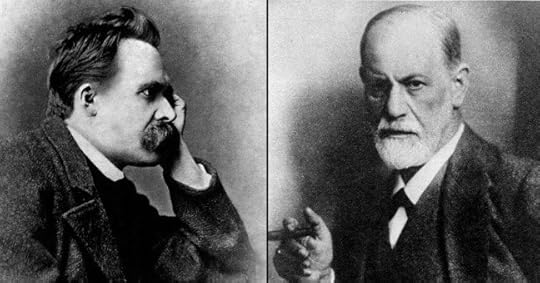
Both Sigmund Freud and Friedrich Nietzsche were hugely influential on the development of reflective thinking.
When applied to both our personal lives and our careers, this is one of the hardest questions we can ask ourselves. Yet, the benefits of taking on the rigors of this form of thinking are clear:
Only by asking such hard questions can we identify our weaknesses and find the path to personal growth.
Other philosophers and psychologists with a particular focus on thinking reflectively include:
VoltaireSpinozaLeibniz (especially viewpoint dependency)Giordano BrunoCarl JungRobert LangsHow to Think Reflectively In 5 Simple StepsAlbert Ellis gives one of the finest reflective thinking models around: A.B.C.
A = AdversityB = BeliefsC = Consequences

Of course, not everything comes down to problems like adversity. You can think reflectively about positive things too, such as when you enjoy a painting or film.
But usually we find ourselves reflecting when we need to solve problems and gain mental strength. So let’s focus on how we can reduce adversity in our lives by analysing our beliefs and the consequences we create.
One: Identify Specific Thinking GoalsAs I just mentioned, reflective thinking doesn’t necessarily entail problem solving. When you want to improve your ability to reflect, start with the end.
For example, you might want to:
Improve your objective reasoning skillsPractice positive visualization using aspects of your personal historyLearn to think more logicallyDevelop the ability to think fasterWhen you know what you want out of thinking reflectively, you’ll get more out of the process.
 This was essentially John Dewey’s message in his book, How We Think (1910). In it, Dewey points out that, “Each phase [of reflective thinking] is a step from something to something,” and describes the process as a chain of consequences.
This was essentially John Dewey’s message in his book, How We Think (1910). In it, Dewey points out that, “Each phase [of reflective thinking] is a step from something to something,” and describes the process as a chain of consequences.
Like Ellis, Dewey stresses the role of belief. But it can be abstract trying to figure out in both Ellis and Dewy how to find out where your beliefs are holding you back. That’s why a program like Self Authoring can be tremendously helpful. I describe an even more robust model you can try in The Victorious Mind: How to Master Memory, Meditation and Mental Well-Being.
Once you have a specific goal in mind, you can “stress-test” it using mind mapping. This can help make your thought process more visual and actionable.
Two: Practice Self InquiryWe know that Socrates favored the examined life.
But how exactly do you exam life?
The answer is delightfully simple:
Ask yourself questions.

What kind of questions?
Well, it turns out that there is a process known as “self inquiry.” It is thousands of years old and part of philosophical traditions like Advaita Vedanta and Zen.
My two favorite questions are:
How do my thoughts behave?
Are they useful?
Why do these two questions work?
https://www.youtube.com/watch?v=kvtYj...
They essentially cause you to pay attention to your experience of consciousness itself.
In other words, you start to reflect on the experience of having a mind. Other reflective thinking examples you can experience come from related questions in Gary Weber’s Evolving Beyond Thought:
How real are my thoughts?Do my thoughts have value?Where does the sense of “real” and “unreal” come from?Where do my biases come from? What is my nature?

Some of these self inquiry questions are very challenging. I have found taking on the challenge incredibly valuable as I become a better thinker.
Three: Focus On The Right ProblemsAlbert Ellis pointed out that people often focus on their “primary disturbances.”
He suggested focusing on the “secondary disturbances” instead.
For example, many people with PTSD will focus on a scene of trauma. But since they cannot change the past, the real problem is the “secondary disturbance” caused by experiencing the memory.
To solve the problem, they need to focus on “the disturbance of being disturbed.”

This way of thinking about it can feel counterintuitive, but once you start practicing thinking in this way, you’ll find great mental relief a lot faster.
Four: Be A RealistPsychologist William James pointed out in Radical Empiricism that we often experience humiliation in the pursuit of goals, but not from failure. Instead, we experience disappointment of how the journey for success played out.
This point brings us back to existentialism and radical honesty. A lot of people can use their minds to visualize success clearly. But because they are not realistic about either their goals or the journey they’ll have to take to get there, they suffer.
A realist, on the other hand, reflects deeply about what success really is and what it really takes to get it.
And because hard work is always involved in achieving anything worth having, a realist can let go of the outcome and enjoy the journey.

Thinking well leads to many wins in life.
Working this way creates a win-win because when you reflect back on the time you spend in moving toward your goals, your memories of the pursuit will not be disappointing at all.
Five: Focus Your Reflections On OthersSo far, we’ve talked a lot about focusing on yourself as an individual. There’s nothing wrong with that.
However, we’ve also noted William James’ warning that dissatisfaction comes more from the journey toward goals than failing to reach them.
Another key strategy for getting more out of the journey is to make sure that you are focused on others in your thinking.
By doing so, you can potentially experience Abraham Maslow’s concept of self-transcendence. As you may know, Maslow talked about the suffering we experience when we are not able to actualize ourselves. As Maslow says about the experience of someone capable of self-actualization:
“He is more able to fuse with the world, with what was formerly not-self, for example, the lovers come closer to forming a unit rather than two people, the I-Thou monism becomes more possible, the creator becomes one with his work being created, the mother feels one with her child.”

It is possible to establish and maintain a state of flow, like waves in the ocean.
Essentially, Maslow is talking about the state of flow, or the feeling of oneness, rather than separation.
But to really feel fulfilled, we need to transcend the notion that there is a “self” at all. Self inquiry is essentially designed to help you experience that, and it can be tough.
But rest assured, As neuroscientists like Sam Harris have often pointed out, no research has yet discovered where the “self” exists in the brain.
So how do we get into a state of flow that helps us transcend?
A Powerful Reflection Exercise For Creating FlowSeating on the floor or a chair, close your eyes.
Starting with the first letter of the alphabet, bring a person you know to mind. For A, you might think of Amy.
(If you can’t arrive at someone for any individual letter, just skip ahead. Do the best you can.)

Reflecting on what you can do for others is very freeing.
Think about something you could do for that person. It doesn’t have to be monumental. The point of the exercise is to start reflecting on your ability to give.
By the time you’ve gone through the entire alphabet, you should be able to create a quick plan and then execute on it. Soon, you’ll start to feel amazing as you transcend your notion of the self.
Other Reflective Thinking Examples To Boost Your ProgressAs you experience deeper reflective thoughts through the steps outlined above, here are some more activities you can explore.
Take everything one step at a time. Learning better thinking processes is a marathon, not a race.
Study Word MeaningsOne problem we see in the world today is a lack of linguistic skills. People understand their own language with less dexterity than ever before. As a result, they fail to benefit from critical thinking that would otherwise benefit their lives.
But when you know what words mean and a little about their history, your thinking power goes way up.

Learning word origins can reduce your suffering by contextualizing it.
We’ve talked a lot about suffering on this page. And it’s a perfect example of how to reflect differently by looking at words.
“Suffer” has the Latin word “ferre” in it, for example. This is the English word for “ferry.”
This suggests to us that our ancestors thought that pain had two aspects to it. The pain itself, and having to carry, or “ferry” that pain from one place to another.
(If you haven’t already, please think back to Ellis and the primary and secondary causes of suffering he identified.)
To give you another example, notice that the word “accept” has the Latin “capere” in it. This means “to take.”
Using our reflective thinking abilities, we can notice that suffering might be part of the world. But our ancestors did not include tolerance or resignation in the word “accept.”

When you see that the word “ferry” is literally in the word “suffer,” you can think differently about it – without necessarily accepting that you have to suffer.
In other words, although we might have to “accept” suffering, we don’t have to be resigned to “ferrying” it everywhere we go. We can seek relief even as we take on the pain. We can respond actively instead.
For more tips like this, check out these 9 Critical Thinking Strategies for lifelong learners.
Reflection-Based MeditationThe alphabet exercise I gave above is a form of reflection-based meditation.
But you can also reflect on:
Your gratitudeCompassion for othersHopes and dreamsFears and concernsBeauty in nature and artThe role of change in the worldHow time passesThings you avoid but need to faceAccomplishments in your personal and professional lifeYour faith or personal philosophyCyclical patterns that show up in lifePositive and negative habits you haveYour personal identity and individualismYour education and knowledgeTechnologySocial topicsYour personal wealthReason vs passionYour memoryBasically, if you can find the theme, you can make it the topic of your reflection-based meditations.

You can use the Memory Palace technique to practice thinking.
Memory Palace Activities For LearningPeople don’t normally think of the Memory Palace technique as a tool for critical thinking and reflection, but it most certainly is.
For example, we know that Roman orators used this technique to deliver their speeches. And it seems clear that their audiences used the same technique to remember what was said.
This enabled people to think deeply about what was said.
This technique is also a means of understanding information that can be tough to process. Unfortunately, many memory experts say that you should understand information before memorizing it, but I have not found that to be the case at all.
Learn more about how to use this technique now.
Read Biographies Of Reflective ThinkersModeling other successful people not only shows you how success happens. It helps you identify steps to avoid.
And this returns us to where we started: Know the goals you have for your thinking activities.
If you want to cope with a problem, such as losing your sight, the reflections you’ll find in The Mind’s Eye by Oliver Sacks is going to be much more useful than a general guide to thinking.
Not only does Sacks share his own thought processes for coping with vision problems. He gives you references to the books he read so he could model success as he learned to cope himself.
To take another example, if you choose to transcend yourself and learn to reflect more deeply on others, you could zoom out from biographers and study great biographers. James Boswell is often considered the first, and Walter Isaacson is a great contemporary example of something digging deep into great thinkers like Leonardo Da Vinci, Albert Einstein and Steve Jobs.
There are many biographies and biographers to choose from, so think about who has the success you want and read about that person. Pay special attention to descriptions of how they thought and how they validated their thoughts through dedicated practice.

As you’ve discovered, there’s a lot that goes into practicing self reflection. The practice is thousands of years old and there are different ways to do it.
However, the commonalities amongst all the approaches are easy to spot:
You need to be honest and focus on reality in your thinkingYou need to be philosophical and even artistic through techniques like mind mappingYou need to analyze the process like a scientistYou need to go beyond yourself and consider othersUltimately, this practice involves thinking about thinking itself. And that reminds me of Tony Buzan’s concept of the Warrior of the Mind.
In books like Mind Map Mastery, Buzan urged us all to practice what he called “radiant thinking.”

Since we always want to analyze what words mean, focus on that notion of “radiation.”
Each thought we think exudes energy. And in no small way, thoughts are energy. They exist because of the positive and negative electrons flowing their own brains.
When you begin analyzing the experience of thinking from this perspective, you have become like a “warrior,” capable of standing up to any challenge.
After all, when you reflect on it… where else are challenges experienced, except in your mind?
Once you realize this simple fact, you really can improve everything. Everything you experience is experience in you and you alone.
Hence the ancient Greek phrase: Know thyself.
Truly, you are the only one who can.
March 10, 2021
Positive Visualization: 7 Substantial Techniques For Lasting Success
 If you want to experience incredible transformations leading to substantial accomplishments, positive visualization can help.
If you want to experience incredible transformations leading to substantial accomplishments, positive visualization can help.
You just have to make sure you make them multi-sensory and based on one simple quirk no one else talks about.
The best part is that this form of visualization is really simple and fun to do.
Are you ready?
Dive in and please enjoy this actionable list of easy steps and positive visualization exercises.
What Is Positive Visualization?During the weeks leading up to my dissertation defense, instead of feeling my palms sweat and my knees shake, I visualized.
To make sure the practice was positive, I built in the proper outcomes based on a secret ingredient you’ll learn today. That ingredient is called multi-sensory visualization and it is very powerful.
I added breathing and muscle relaxation to ensure I was really present.
How?
Getting really tuned in with my body.
That means consciously feeling my feet on the floor. It means following the passage of air in and out of my lungs. And it means mentally noticing that the experience of having thoughts is itself physical.
All the worry and the strain could be dispelled simply by acknowledging it was there and directing oxygen at dispelling it.
Then, while going through the grueling rigors of the exam, I kept focused on my body. And as I answered questions, I positively imagined getting my degree.
I didn’t just “see” this happening in my mind.
No, I made it multi-sensory by hearing the sounds of clapping from the audience attending my exam.
I felt the handshakes.
I experienced an imaginary version of the emotions that come from success.
I even tasted and smelled the celebration sushi dinner we planned for after the exam.
To give a simple formula:
Body + multi-sensory imagery + a focus on positive outcomes = Mindcrafting.
Here’s the best part:
When you have a positive experience, you can craft it as a tool for use later.
For example, I have revisited the experience of successfully earning my PhD on that day many times.
To do so, I put it in a Memory Palace. That way it has continued to grow in effectiveness over the years whenever I need positivity on demand.
In case you’re wondering, this positive visualization practice is scientifically valid. Here’s just one of many excellent studies by Dr. Tim Dalgleish on using a Memory Palace for positive visualization.
Positive Visualization: A Working DefinitionYou now know that this form of visualization is powerful and can be reused many times. It is also defined as:
A pleasant alternative to “monkey mind” thinking that wears you down with stressA multi-sensory experienceA mental experience that incorporates the entire bodyAn imaginary event that is used before, during and after a goalA process-based resource that you can benefit from on demand

As you can guess by the fact that I’m sharing this information, I successfully passed my final exam and was awarded my PhD.
Here is a list of the different visualization meditation routines I use personally. They are all science-based and will serve as a starting point for you to build your own “stack” of visualization tools.
Again, please understand that the core technique I have been using improves mood and has been successful in helping people with mood disorders, PTSD and more.
That core technique is called the Memory Palace and is well worth learning. But before we dig into it, let’s start with some fundamentals of visualization so you can make sure you do it in a way that is actually positive in nature. This aspect can be a bit counterintuitive, so the granular details really matter.
One: Focus Your Visualization Exercises On Practical OutcomesAs Richard Wiseman notes in 59 Seconds, many people who visualize slow or ruin their progress.
How?
They set impossible goals.

You can definitely visualize yourself getting fit, but there are more appropriate parts of the process to focus on. And you want to make sure that the outcome is actually achievable in your personal context.
For example, a person with a particular skeletal shape might never be built like Schwarzenegger.
Yet, some will persist in creating such impossible visualizations instead of focusing on seeing themselves getting their shoes on and going out for a run.
Likewise, a person who has not made a dollar in their life as a business person is spinning their wheels visualizing themselves as a billionaire, let alone a millionaire.
It’s much more practical and therefore useful to direct visualization at learning how to make that first sale instead. That you can visualize the next most logical step in the process of reaching your goal.
Here’s another way to look at it, and this is the secret ingredient that matters most:
You want to base your visualization practice on your existing competence.
As psychologist Jordan Peterson lays out in Maps of Meaning, your path to learning and experiencing more success is secured if you take what you’re already good at and focus on the next step forward.

Basing your visualizations on existing competence is critical to ensuring you can take the next steps forward with success.
This point is important because you have in memory the skills that it took to get where you are now. You visualize what they are and then you imagine just the next step.
Of course, that next step can be optimized, so let’s talk about how next.
Two: Visualize Milestones Supported By SystemsNow that you know what not to visualize (impossible goals), let’s make sure that when you break down what you’re going to visualize, you have the support you need.
Few goals involve any kind of direct path. Most things worth achieving require you to successfully bring together multiple moving parts.
To visualize in ways that help you keep the big picture and the granular details in mind at the same time, it’s important to break goals down into milestones.
For example, when I wrote my dissertation, 100,000 words was an overwhelming number. Visualizing a printout the size of a phonebook did not help me.

Positive visualization is helpful even for massive projects like writing a book.
However, what did help was visualizing myself organizing my outline, then writing 1000 words a day.
I also visualized myself following a simple writing system. If I put my computer to sleep, I would have the document I was working on open so the next time I logged on, it would be the first thing I saw.
Then I started following that system. (By writing this post, I’m following it now too.)
To help myself even further with that massive document, I recorded a simple guided visualization for myself. This quick recording focused on the feeling of accomplishment of both doing the writing and having finished the project.
Whatever goals you are trying to visualize, break it down into smaller parts. And focus on creating and then following simple systems. That way you don’t need to wait for motivation.
Instead, you just follow the steps involved in the system. And you’ll know those steps very well thanks to the power of visualization.
Three: Make Sure Your Visualization Experience Is Multi-sensoryIt’s a quirk of the English language that we say “visualization.” What we really mean is multi-sensory imagination.

It can take some practice, but multisensory visualization is important for creating lasting transformation.
For example, when I visualize myself writing the millions of words I’ve produced across my career, “seeing” the action in my mind is barely part of the process. There are even people with aphantasia who can’t see images at all.
Instead, I focus on the feeling of the keys as I type. I hear how it all sounds and enjoy the taste of my favorite teas.
The deeper into all of your sensations you can go, the more you’ll get out of the experience. It is truly inspiring and helps you notice more of the nuances involved in so many pleasures we usually dismiss.
Here’s more on how to visualize clearly when you want to reach the next level.
Four: Make Sure Your Positive Visualizations Are Actually PositiveA big problem a lot of people have is they disguise negativity in their visualization efforts.
For example, some people will follow a visualization script that says, “I get a raise and the promotion I finally deserve.”

It’s important to test your visualizations because it’s easy to think you’re being positive when you’re actually still stuck in negativity.
This kind of visualization encodes negativity because it implies entitlement. You might well “deserve” it, but nothing in this example visualization follows the rules we’ve laid out above.
An alternative would be a multisensory visualization that focuses on existing competence and systems that lead toward getting a raise. For example:
I feel great as I prepare my notes for the meeting with my boss. I enjoy listing the positive boosts in revenue I’ve generated for the company and specifically connecting them to the evidence of my contributions. I remember to explain my plans for improving myself further by mentioning the new professional certification courses I’ve joined and am completing in my free time.
Notice how the goal of getting the raise remains, but the emphasis is on the performance in the meeting. The focus is on the positive demonstration of why the raise makes sense, not why the visualizer is entitled to it.
Five: Script Your VisualizationsThe best way to make sure your visualizations are in fact positive is to write them out.
Sure, it would be nice if someone knew you well enough to tailor-make a visualization for you.
But that’s not realistic, and you gain so much by doing it yourself.

Just as you’ll want to visit a tailor for clothes that truly fit properly, it’s important to script your visualization routines so they work for your unique circumstances.
For one thing, writing your own visualizations is itself an immersive positive visualization exercise. By putting what you want to create into writing, you externalize it, which gives it more dimensions as it grows in your imagination.
And the writing process helps you “stress test” that what you want is actually true and as positive as it should be.
Six: Choose The Right Time And SettingsWhen it comes time to practice the visualization itself, make sure you’re comfortable and won’t be disturbed.
I suggest a variety of locations, both in your home and in outdoor environments.
Why?
It’s important to have fresh air, greenery and a bit of exercise to stimulate what is called “diffuse thinking.” This is what leads to those eureka moments where even more dots connect.

People often give up too soon. Please don’t fall into that trap.
Seven: Visualize Frequently Enough To Make A DifferenceThe main problem I see with people who aren’t getting results from visualization is that they give up too soon.
Or they don’t practice frequently enough to really learn the nuances you’ve discovered today.
After all, we know that reading is not enough. You have to practice the right visualization exercises and you need to do so consistently.
The question is… how do you rig the game and expand your mind sufficiently enough that you cannot fail?
There’s no cookie cutter answer here, but I do have some tips:
Have a big enough “reason why” and test that reason (writing your visualization of the reason is a good place to start)Schedule a time to practice with something like The Freedom JournalPractice at least 4x weekly for 90 daysThat might seem like a lot of practice, but in the grand scheme of things, it is nothing. You’re going to live those 90 days anyway, and the neurochemistry of habit formation shows how repetition is key.

Habit formation is really just a process of mindcrafting the neurons in your brain. Once this is done, you’ll find you just show up to the practice of positive visualization automatically.
Without getting too deep into the science of neurons and dopamine, I “visualize” it like gardening:
You have cellular connections in your brain that are like vines. (Vines are positive habits.)
The strength of those vines comes down to your consistency in showing up to water them and clear away the weeds.
More weeds are always coming and water, if not fertilizer will always be needed.
Be consistent with your visualization activities and you will improve how you’re doing it and experience more successful outcomes.
The Ultimate Truth About Positive Visualization ExercisesIn a phrase:
They work, if you do the work.
The good news is that this “work” is easy and fun.
But if you struggle, you now have powerful guidelines that can get you over the hurdle.
And if you find it hard to remember when and how to visualize, or you want to recite potentially dozens of positive visualization routines from memory, here is my FREE memory training course:
So what do you say?
Are you ready to dive in and visualize with renewed success? Which of these tips are you going to explore first?
March 3, 2021
Harry Kahne’s Multiple Mentality Course: An In-Depth Review
 How would your life improve if you could perform six mental operations at the same time?
How would your life improve if you could perform six mental operations at the same time?
Do you think it would help you tap into more of your brain power?
Harry Kahne certainly did.
And he proved it many times, often by writing out quotes from books in both hands while talking to his audience about other topics.
The strangest part?
He claimed his mind was perfectly average. He told thousands of people around the world that anyone could perform multiple operations at the same time.
I agree, and here is why:
I’ve been practicing exercises from Harry Kahne’s Multiple Mentality Course for years. Although I can’t perform many of his impressive students, here are a few benefits I’ve experienced along the way:
Sharper thinkingMore free timeImproved numeracyBetter memoryUseful mental connectionsEnhanced abilities with memory techniques.Of course, I’m not practicing these techniques to deliver stunt performances… the odd time I might recite the alphabet backwards while juggling:
https://www.youtube.com/watch?v=lGEuP...
The real reason I perform demonstrations is to aid my research into how to use memory techniques better. I’m also constantly crafting new brain exercises so others can experience mental sharpness that lasts.
Why?
For one thing, there’s a lot of warnings out there against multitasking out there – most of them very good.
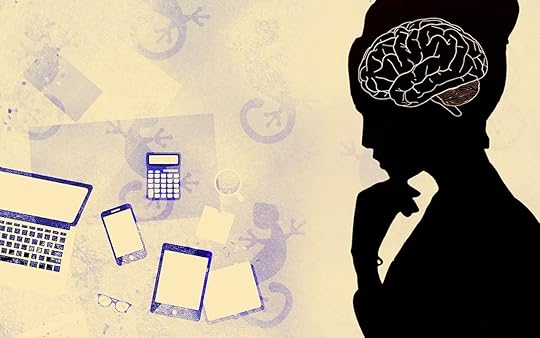
Normally, we’re told to avoid multitasking. But is this always a good thing?
But when it comes to using mnemonic devices to memorize, say, all the names in a packed room, we definitely need to multitask in our minds.
Directing multiple mentality at our use of memory techniques seems to me the finest possible use.
So let’s dive deeper into who Harry Kahne was and what multiple mentality is all about.
Who Was Harry Kahne?Harry Kahne proved that multitasking is indeed possible.
He demonstrated this by performing demonstrations where he would write upside down with one hand, backwards with the other, all while reciting poetry.

Harry Kahne solving a crossword puzzle upside down and backwards while reciting memorized information.
Or, he might solve complex calculations with his feet while speaking to his audience as his hands wrote out newspaper headlines from memory.
https://www.youtube.com/watch?v=LQ2S6...
Born in 1894, Kahne said that he started practicing multiple mentality during school. His teachers kept catching him daydreaming, so he devised a way to read his school books and daydream at the same time.
Clever!

Derren Brown
By the time the 1920s rolled around, Kahne was touring as The Incomparable Mentalist.
I don’t know if Harry Loryane ever saw Kahne demonstrate his skills, but certainly these kinds of performances were common on the vaudeville circuit at that time. These days, Kahne’s work looks more like what we see from mentalist Derren Brown.
To help other people learn how to perform several operations at once, he explained how others can practice the same “mental gymnastics” he used to develop his skills.
Multiple Mentality Course ReviewHopping into a time machine to attend a live lecture with Kahne is sadly not possible (yet).
But we can find a PDF or webpage version of his teaching, and it is incredibly helpful.
Here’s what you’ll learn:
One: Why People Fail To Exercise Their MindsKahne feels that schools focus more on socializing individuals than it teaches them to think. He also points to modern comforts as a source of weakening the mind, citing earlier survival requirements as being essential to better thinking.
Although I think Kahne is right that needing to hunt, farm, build shelter and raise a family without the luxuries of contemporary medicine required more thinking, I don’t quite agree.
For one thing, those skills have very little to do with writing poetry in reverse with your hands while verbally solving math problems.

Also, we have the problem that the very reason we have so many luxuries comes from masses of people who have developed improved thinking skills. Kahne’s historical fallacy in this regard suggests that his objective reasoning might not have been as improved by multiple mentality as he claims.
Nonetheless, Kahne is correct that all of us need “warming up” when it comes to using our mental abilities better. In fact, this point shows up in creativity studies.

Just like your body needs warming up before exercising, your brain needs it too.
For example, Dr. Robert Epstein is a leading authority on creativity. In numerous articles, many gathered in his book, Cognition, Creativity, and Behavior, Epstein shows how a quick warmup improves creativity, focus and attention while engaged in more complex tasks.
This is why I like to quickly memorize a deck of cards or juggle while reciting the alphabet backwards before sitting down to do any writing or language learning.
Two: Alphabet ExercisesKahne explains that these are the most important aspects of his training. Having practiced them myself, I can see why.
First, he asks you to write out the alphabet backwards… from memory. Unfortunately, he doesn’t teach you how to memorize it in reverse order, and gives the bad advice that you should write it out 50 times to learn it.
That’s too much work! So to reduce all of that unnecessary repetition, I teach you how to memorize it backwards in the Magnetic Memory Method Masterclass.

In addition to working with the alphabet in reverse order, Kahne asks you to:
Pair the alphabet’s extreme ends by mentally reciting them, i.e. A-Z, B-Y, C-X, etc.Start at the center of the alphabet and pair them in reverse orderI would also suggest that you learn the number of each alphabet letter. You can rapidly do this by using the pegword method and a Memory Palace.
Three: Writing and Verbal ExercisesStarting with 3-letter words, Kahne asks you to write one word while spelling another out loud.
For example, as you write S-K-Y to spell “sky,” you would spell pen, i.e. P-E-N.
It’s actually trickier than it seems – give it a try!
Next, work on writing one word forwards while verbally spelling it backwards. Then, write a different word backwards while verbally spelling it forward.
From there, move on to 4-letter words and beyond.

There are many ways to increase the challenge of Kahne’s multiple mentality exercises. For example, you can visualize other things while performing them.
For an additional challenge, try visualizing something completely different. For example, as you’re spelling “tree” and writing “cart,” imagine a tent.
Four: Write Words From MemoryKahne asks you to find forty words and write them on paper.
Then he asks you to crumple the paper up and write all those words again on a fresh piece of paper.
I think he’s quite misguided in asking you to repeat this 25 times or more. You could just learn how to memorize vocabulary and get the list correct the first time.
For a great word generator, I suggest the IAM memory training website. It generates words, numbers and other memory competition-related material for you. It also lets you test your results.
Or you can just grab a deck of cards and memorize those.

Memorizing playing cards is a powerful form of brain exercise that uses multiple parts of your mind.
Five: Recite Poetry While Writing Your Name And AddressNow we’re talking!
Although Kahne gives no instructions on how to memorize poetry, this is a great exercise.
As Kahne points out, however, your address is going to be rather easy.
To increase the difficulty, recite a poem while writing out the address of a friend.
Six: Word RecombinationNext, Kahne suggests that you take the 4-letter words you memorized and start recombining them.
For example, if you memorized fish and cart, you would spell something like “fictrash.”
Or, if you intermingle them in order, it would be one letter from each word interleaved:
F-C-I-A-S-R-H-T
It’s actually REALLY hard to do correctly, and typing presents a different kind of challenge. You can think of it as the mental version of preparing your fishing line.

This particular brain exercise is kind of like preparing fishing line in your mind.
Kahne suggests you spend 20 minutes daily on intermingling the letters of words.
The only change to this exercise I would suggest is that you quickly do this after memorizing vocabulary from the IAM lists. And I’m not convinced you need to spend quite so much time on the exercise. Probably 5 minutes will do.
Seven: Intermingle Entire TextsThere are many more exercises in the Multiple Mentality Course. I’d be robbing you of the opportunity to discover them for yourself when you read it.
But to skip to the kingpin of them all, imagine memorizing three verbatim texts, say a poem, a speech and a list of 3-digit numbers.
As you recite the memorized speech, you write the poem with your left hand and the digits with your right hand.

How will you get there?
Practice with just writing first.
For example, write the first word of the speech, then the first word of the poem, then the first string of digits. Carry on from there, alternating as you go through all three pieces of information, unit by unit.
Will Multiple Mentality Really Help You?Ultimately, I cannot say.
But practicing these skills has been noticeably beneficial to me because I suffer from brain fog if I don’t get enough mental exercise.
Plus, I have so much chronic pain to deal with, I need the mental strength these activities bring in order to cope.
And all the more so, given that I myself have to memorize speeches and deliver them well.
Even if some of the ways I use these exercises are not as elaborate as Harry Kahne’s demonstrations, given all the challenges I face, I need all the mental robustness I can get. And these activities deliver.

Taking on challenges is key to mental growth throughout life.
The real reason I think these exercises work is simple:
They promote cognitive switching, which is known to help people establish mental flexibilityThey improve memory because you are exercising itThey expand hand-eye coordination because you are writing in challenging waysThey exercise verbal memory because you are reciting information in a novel formatBeyond that, they get you working with information in ways we’re not used to doing. This simple “out of your comfort zone” stretching provides mental dexterity we wouldn’t have otherwise.
And if you think about it, the other ways of developing such skills of the mind are very similar:
Reading a lot, drawing from your memory frequently, combining ideas in different ways.

Those things are draining, however.
That’s why using Kahne’s exercises as warmups has helped me do all the things I do, both in memory and running this site. Think about how many years I’ve been juggling the MMM Podcast, Blog, YouTube channel and the courses – talk about multitasking!
All that said, here are my main concerns:
Kahne’s social criticisms are obviously not correct. It’s also strange to me that Kahne doesn’t teach mnemonics.
But that’s okay. It gives me the opportunity to fill in the gap through a free course I invite you to sign up for now.
When you add memory techniques to the exercises we’ve talked about today, I’m sure you’ll find all of Kahne’s exercises beneficial.
In fact, I’m not sure I would have been able to use ars combinatoria without having practiced them first. And that skill has been very beneficial to me indeed.
What other mental exercises do you know that exercise multiple mentality?




